Places to Visit in Azerbaijan
Azerbaijan offers many unique places to explore with its historical riches, natural beauties and cultural heritage. Places to visit in Azerbaijan are like a treasure waiting to be discovered at every corner, with a rich history and fascinating natural landscapes. These places, which have a wide range from natural parks to historical monuments, attract the attention of both local and foreign tourists. Each region of Azerbaijan offers unforgettable experiences for culture and history enthusiasts with its unique characteristics.
Headlines
- 1 Historical Places to Visit in Azerbaijan
- 1.1 Azykh Cave
- 1.2 Baku Ateshgah (Fire Temple)
- 1.3 Baku Government House
- 1.4 Baku Maiden's Castle
- 1.5 Bukhara Caravanserai
- 1.6 Dadivank Monastery
- 1.7 Eternal Flame Monument (Martyrs' Monument)
- 1.8 Galarsan-Gorarsan Ruins
- 1.9 Ganja Castle
- 1.10 Icherishehir
- 1.11 Mukhtarov Palace (Palace of Felicity)
- 1.12 Multani Caravanserai
- 1.13 Nizami Ganjavi Monument
- 1.14 Freedom Square (Azadlik Square)
- 1.15 Qosha Qala Gate
- 1.16 Ramana Castle
- 1.17 Martyrs' Lane
- 1.18 Palace of the Shaki Khans
- 1.19 Shaki Castle
- 1.20 Palace of the Shirvanshahs
- 1.21 Bottle House
- 1.22 Zaqatala Castle
- 2 Religious Buildings to Visit in Azerbaijan
- 2.1 Ajdarbey Mosque
- 2.2 Baku Heydar Mosque
- 2.3 Baku Grand Mosque (Friday Mosque)
- 2.4 Bibiheybet Mosque (Bibi-Heybat Mosque)
- 2.5 Diri Baba Tomb
- 2.6 Russian Orthodox Church of Ganja
- 2.7 Tomb of Mumine Hatun
- 2.8 Omer Efendi Mosque
- 2.9 Seyyid Yahya Tomb
- 2.10 Shah Abbas Mosque
- 2.11 Sheki Albanian Church
- 2.12 Taze Pir Mosque
- 3 Museums to Visit in Azerbaijan
- 3.1 Azerbaijan Independence Museum
- 3.2 Azerbaijan Literature Museum
- 3.3 Azerbaijan Carpet Museum
- 3.4 Azerbaijan Geology Museum
- 3.5 Azerbaijan National Museum of Fine Arts
- 3.6 Azerbaijan National History Museum
- 3.7 Baku Miniature Book Museum
- 3.8 Baku Museum of Modern Art
- 3.9 Baku International Mugam Center
- 3.10 Sheki Museum of History and Local Lore
- 4 Parks and Natural Beauties to Visit in Azerbaijan
- 4.1 Absheron National Park
- 4.2 Absheron Peninsula
- 4.3 Baku Ataturk Park
- 4.4 Baku Fountains Square
- 4.5 Baku Funicular
- 4.6 Baku Zoo
- 4.7 Baku Mini Venice
- 4.8 Lake Boyukshor
- 4.9 Mud Volcanoes
- 4.10 Upland Park
- 4.11 Fuzuli Park (Winter Park)
- 4.12 Lake Goygol
- 4.13 Khagani Garden (Molokan Garden)
- 4.14 Lake Khojahasan
- 4.15 Qobustan National Park
- 4.16 Masazir Lake
- 4.17 Yanar Mountain
- 5 Boulevards and Squares to Visit in Azerbaijan
- 6 Theatre and Art Centers to Visit in Azerbaijan
Historical Places to Visit in Azerbaijan
Azerbaijan offers unforgettable experiences to travelers with its rich historical past and cultural heritage. In these lands, every corner is filled with historical artifacts and traces of the past. Ancient structures, monuments, castles and temples reveal Azerbaijan's thousands of years of history. Historical places to visit in Azerbaijan provide a deep perspective on the country's past and cultural diversity. With their rich architecture and historical texture, these places offer unique opportunities for those who want to discover the fascinating aspects of modern Azerbaijan, which carries impressive traces of the past.
Azykh Cave
The Azykh Cave is an important archaeological site located in the Fuzuli District of Azerbaijan. It draws attention as one of the settlement areas of stone age people. The cave provides important information about the evolution of humanity. It is located on the banks of the Kuruchay River, at an altitude of 900 meters. Its total length reaches up to 600 meters. It has 8 galleries and 7 exits. It was discovered that people lived here approximately 1 million years ago. There are traces of stone age people who lived by hunting and gathering. Stone tools, bones and fossils were found in the excavations carried out here. The findings changed the theories of human history. The Azykh Cave is a discovery point that attracts tourists. It can be visited every day of the week, which offers flexibility.
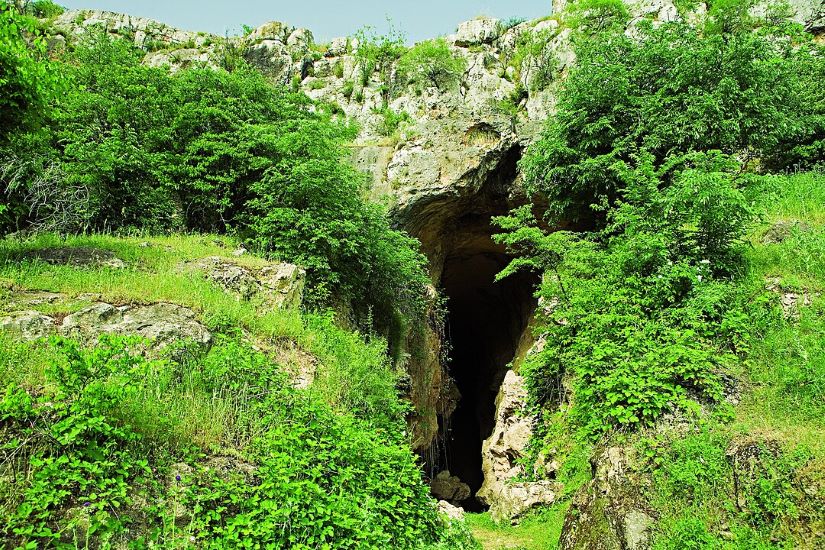
Baku Ateshgah (Fire Temple)
Baku Ateshgah is one of the most sacred places of the Zoroastrian faith. It is located 30 kilometers south of Baku. Ateshgah, which means “fire temple,” is in an area where there is a natural gas leak. The fire, which has been burning continuously since the 16th-18th centuries, is considered sacred by the Zoroastrians. The temple was added to the UNESCO World Heritage List in 1998. The sacred fire is constantly burning in the central room. The walls of the room are decorated with detailed decorations. Ateshgah welcomes thousands of visitors every year. It has great importance as the center of the Zoroastrian faith. Fire is a symbol of life and enlightenment for the Zoroastrians. The sacred fire is constantly protected by officials. Ateshgah is known as the center of worship and visitation for the Zoroastrians.
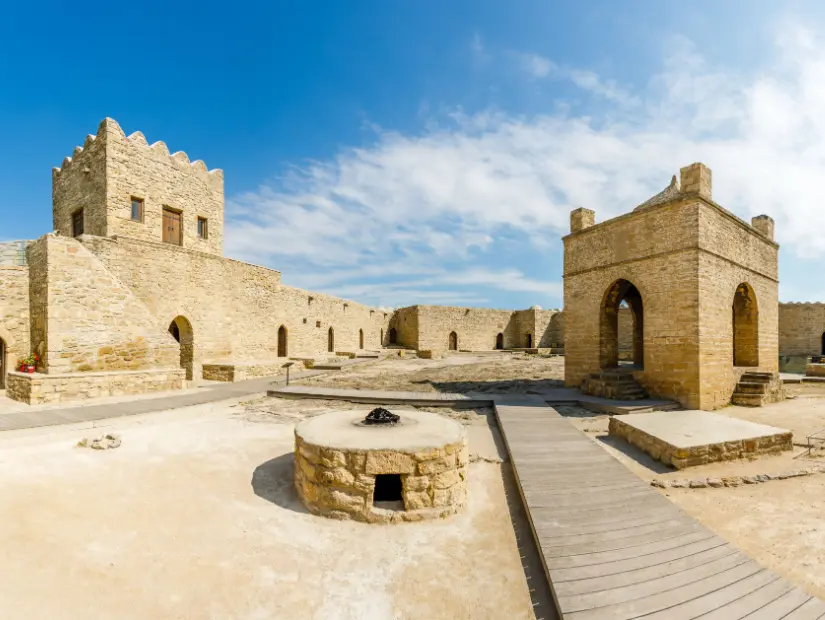
Baku Government House
The Baku Government House is one of the historical and cultural symbols of Azerbaijan. It is located on Neftchiler Boulevard, overlooking Baku Boulevard. Its rear side overlooks the lively Uzeyir Hajibeyov Street. It was designed with a capacity of 5500 people. It was built between 1936-1952 during the Soviet era. Soviet architect Lev Rudnev designed the building in the Stalinist Baroque style. White marble and red brick adorn the exterior. Columns, arches and statues adorn the facade. Its dome is 72 meters high and stands out with its magnificence. The interior is enriched with frescoes and mosaics. It has been used as the government center since the independence of Azerbaijan. The Government House is one of the important tourist attractions of Baku.
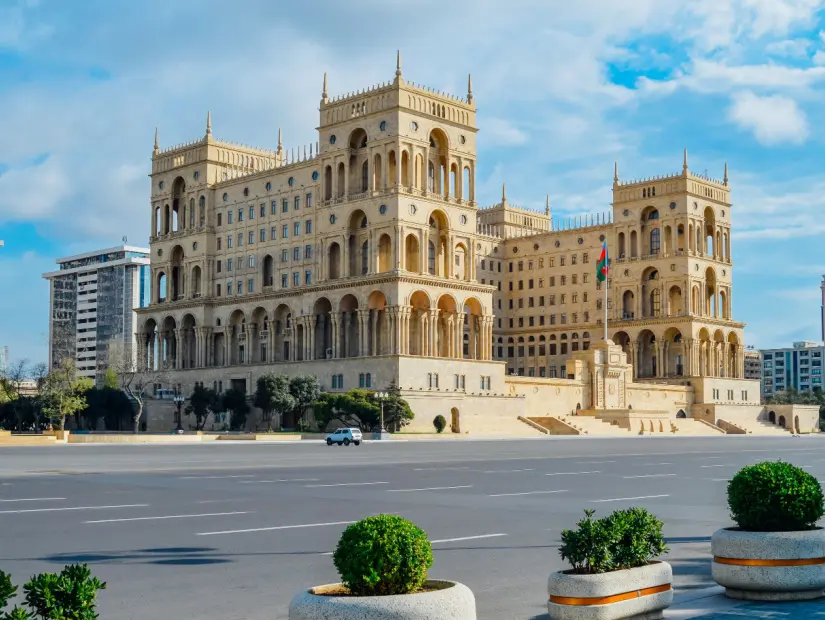
Baku Maiden's Castle
Located in the heart of Baku, the Maiden's Castle rises as a symbol full of history. Located on the shores of the Caspian Sea, this tower is 28 meters high. It is thought to have been built for defense purposes by the Shirvanshah Dynasty in the 12th century. Located in the Icherishehir region, the castle preserves the historical texture of Baku. Its cut stone walls and alignment offer a unique architecture. The watchtower gives the castle a functional aesthetic. It holds an important place in Azerbaijan's national identity. It is possible to watch the magnificent view of Baku from the summit. Climbing to the top with 84 steps is a different experience. The Maiden's Castle draws attention as a structure known with legends. According to rumors, a princess cannot be reunited with her lover. The princess, who was locked in the castle by her father, cannot stand the pain. She throws herself into the Caspian from the castle in the sea. It has been known as the "Maiden's Castle" since that day. Thousands of travelers visit this mystical tower every year.
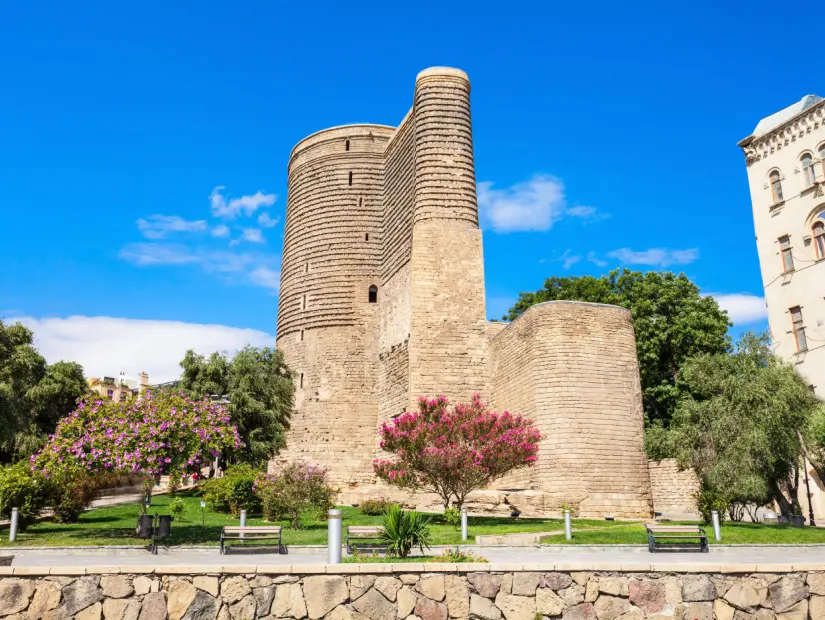
Bukhara Caravanserai
Bukhara Caravanserai is an important structure reflecting the rich history of Baku. Asia It was built by merchants in the 15th century. It is on the UNESCO World Heritage List in the Icheri Sheher district. It is notable for its single-story, round design and 17 rooms. In the center of the garden is a pool with a protected water level. Its walls are decorated with Azerbaijani carpets, rugs and historical paintings. It offers a space in harmony with other historical structures in Baku. Visitors discover the history and culture of Azerbaijan here. The caravanserai offers accommodation, delicious food and souvenirs. This caravanserai in Icheri Sheher invites visitors to a journey into the past.
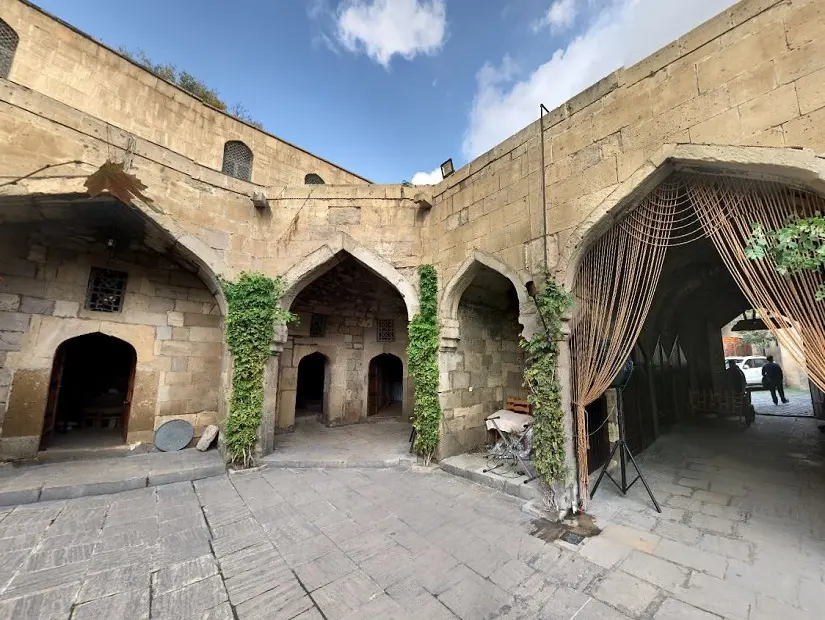
Dadivank Monastery
Dadivank Monastery is located in the Kelbajar Rayon of Azerbaijan, in the northwest of Nagorno-Karabakh. It was built between the 9th and 13th centuries. It is one of the important monasteries of the Armenian Apostolic Church. The monastery complex consists of a church, a chapel, a library, a guesthouse and walls. The church, located in the center, is covered with an elegant dome. The interior of the church is decorated with elaborate frescoes. The chapel is a domed and frescoed structure next to the church. It has a library where medieval manuscripts are kept. The guesthouse offers accommodation to visitors. The walls surrounding the complex provide protection. Dadivank Monastery is historically and culturally important. It is one of the iconic structures of Armenian culture and faith.
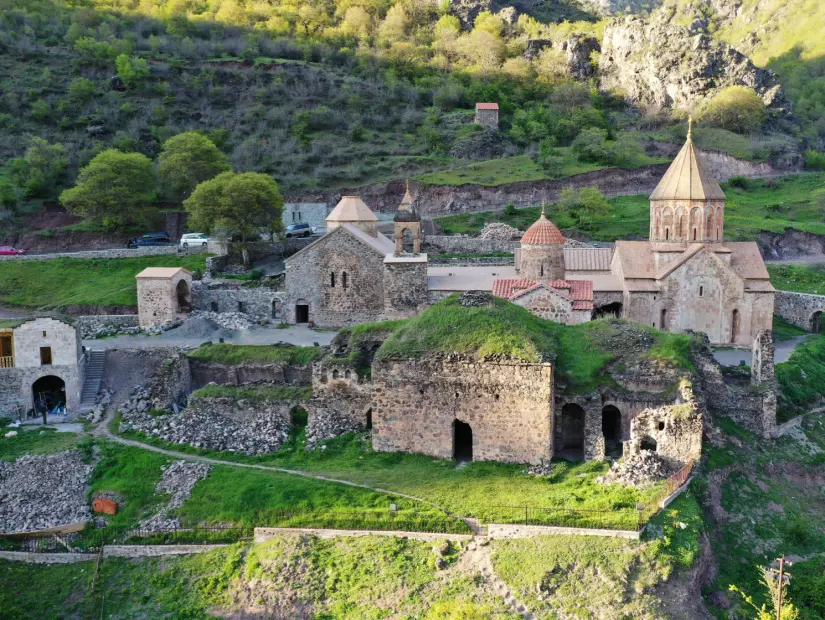
Eternal Flame Monument (Martyrs' Monument)
The Eternal Flame Monument is one of the symbols of eternity and independence of Azerbaijan. It attracts the attention of visitors with its never-ending flame. A special fire burns continuously under the octagonal dome. This fire also refers to the energy power of the country. The Eternal Flame is a sacred symbol dedicated to the first martyrs of the struggle for independence. The monument has an important meaning for the people of Azerbaijan on behalf of the martyrs. The night lighting adds an impressive atmosphere to the monument. There are statues around it reflecting the symbols of independence. This monument is known as the symbol of peace and the struggle for independence. It attracts the attention of thousands of local and foreign tourists every year. The design of the monument shows respect for the traditional architecture of Azerbaijan.
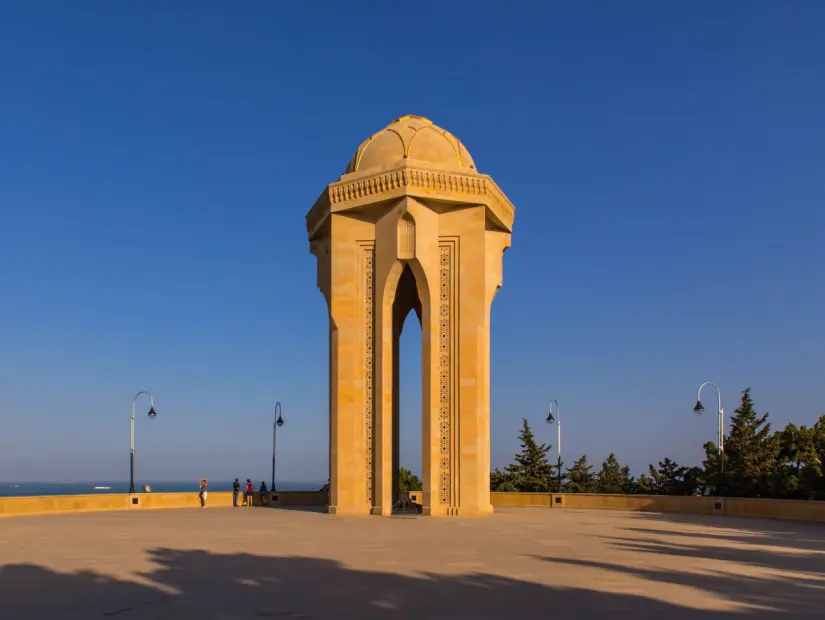
Galarsan-Gorarsan Ruins
The Galarsan-Gorarsan ruins are an important structure reflecting the historical and cultural heritage of Azerbaijan. It was strategically built on a high hill in the Middle Ages. The castle provided effective protection against enemy attacks. Surrounded by the beauty of nature, it offers a peaceful atmosphere. There are historical structures and ruins inside the castle. It gives visitors the opportunity to understand the historical importance of the castle. It is ideal for discovering the rich history of Azerbaijan. Galarsan-Gorarsan offers visitors an unforgettable experience. It is recommended that everyone who comes to Azerbaijan visit these ruins.
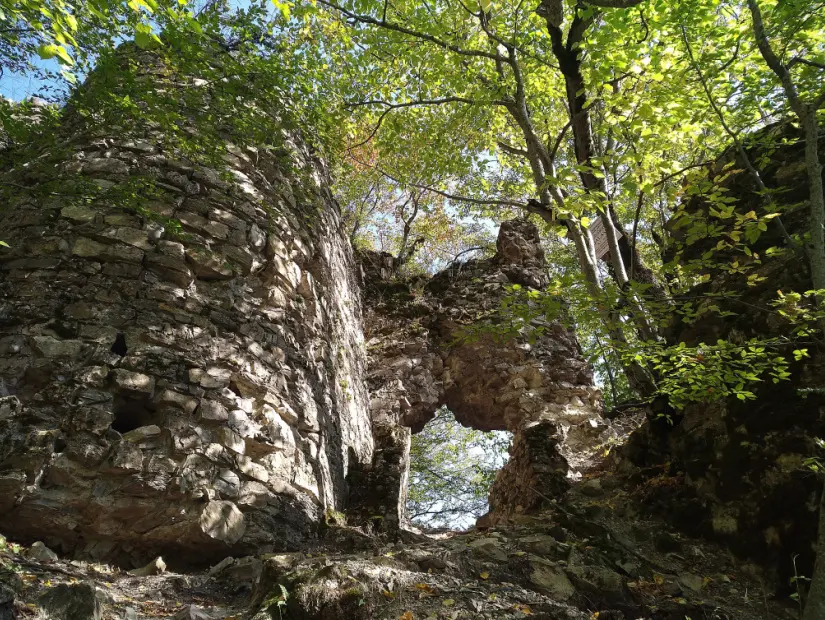
Ganja Castle
Ganja Fortress is a structure from the Ottoman period in the city of Ganja, Azerbaijan. It was built in 1588 by the order of Murat III. The fortress is quadrangular in shape and surrounded by thick walls. The walls are 10-12 meters thick and 10 meters high. There is a gate on each side. It contains structures such as a mosque, a bathhouse and a madrasah. Ganja Fortress makes important contributions to the history of Azerbaijan. It symbolizes the influence of the Ottoman Empire in the region. Today, it is open to visitors and carries traces of the past.
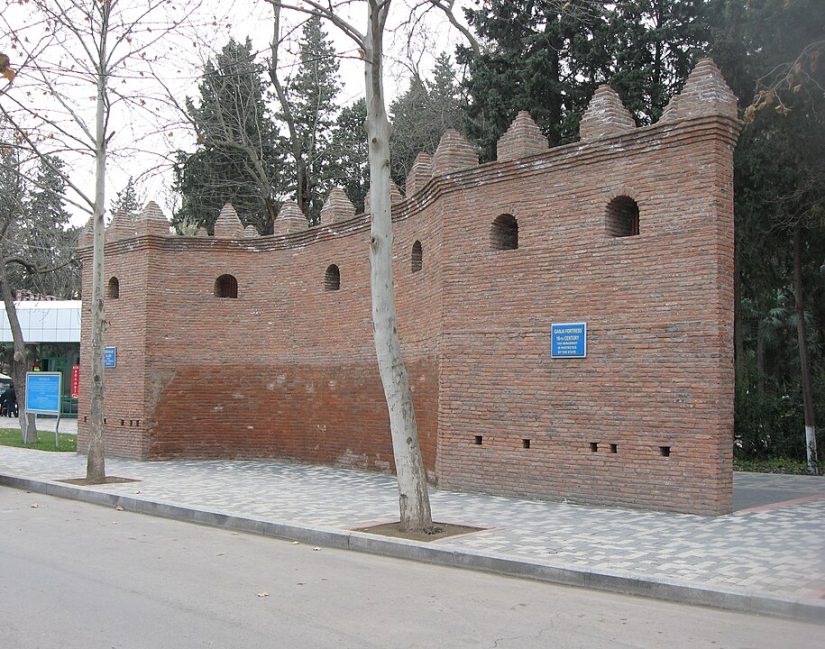
Icherishehir
Located in the heart of Baku, Icherishehir offers an unforgettable experience with its historical texture. It is known worldwide as a UNESCO World Heritage Site. It establishes a fascinating balance between the old and the new. You will feel like you are traveling through time in the narrow streets of Icherishehir. Every step you take leads you to a new discovery. Stone buildings, monuments and ruins create an atmosphere full of history. It is possible to discover the Shirvanshahs' Palace on the walking route. The palace complex is located in an area surrounded by courtyards, baths and mosques. Here, you are offered the opportunity to get to know the history of Azerbaijan closely. The Maiden's Tower in Icherishehir is another symbol. When you climb the tower, you can watch the panoramic view of Baku. The city view makes you feel the impressive atmosphere. There are restaurants and cafes on the streets of Icherishehir. You can taste the flavors of Azerbaijani cuisine here. Local handicrafts can be found in the shops in the area. Icherishehir is ideal for shopping and buying souvenirs.
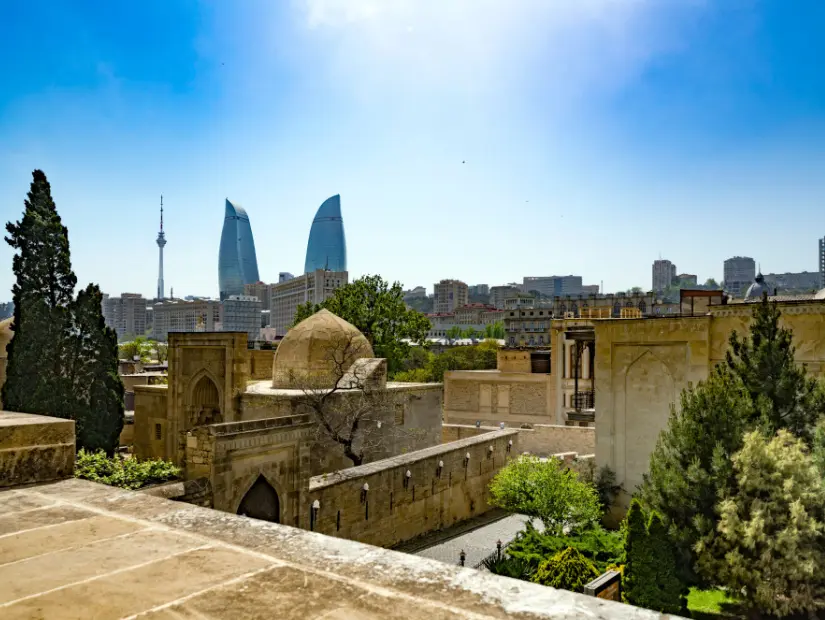
Mukhtarov Palace (Palace of Felicity)
Mukhtarov Palace was built in 1911-1912 in the center of Baku by Murtuza Mukhtarov. The palace is a neo-gothic masterpiece built for his wife Liza Mukhtarova. It was elegantly built using red brick and white marble. It has three large entrance gates and elaborately carved statues. It spreads over a large area of approximately 1200 square meters. The interior offers a luxurious atmosphere and detailed ornaments. Each hall is meticulously decorated from ceiling to walls. An elegant appearance is provided by wooden and marble furniture. It attracts the attention of thousands of tourists every year. The palace is also known as the Palace of Felicity. It has an important place among the architectural beauties of Baku.
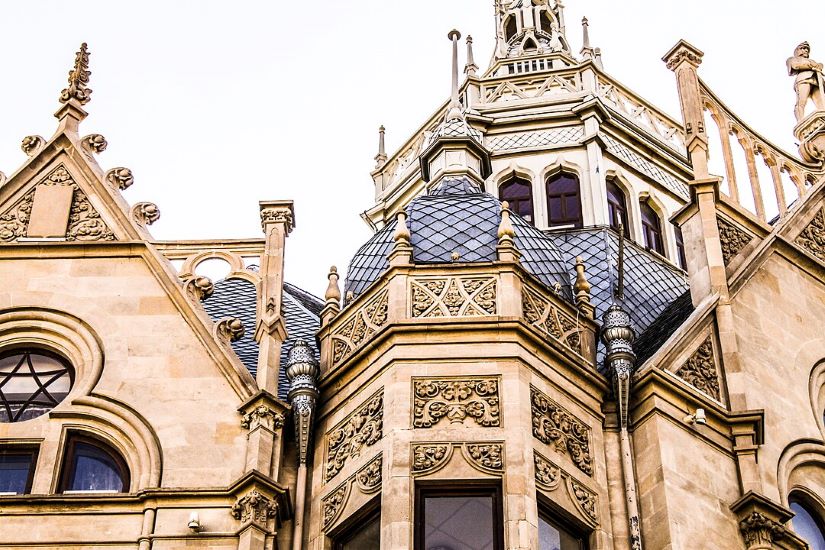
Multani Caravanserai
Multani Caravanserai was built in the 14th century in the historical Icherishehir district of Baku. The caravanserai is approximately 60 meters long and 30 meters wide. Its exterior is made of carefully cut stones. Its facade is distinguished by elegant arches and columns. The interior has a courtyard surrounded by rooms for travelers. A small mosque is located in the center of the caravanserai. It met the accommodation and resting needs of merchants in the Middle Ages. Today, it is one of the important cultural heritage sites of Azerbaijan. Visitors can feel the historical atmosphere of the caravanserai.
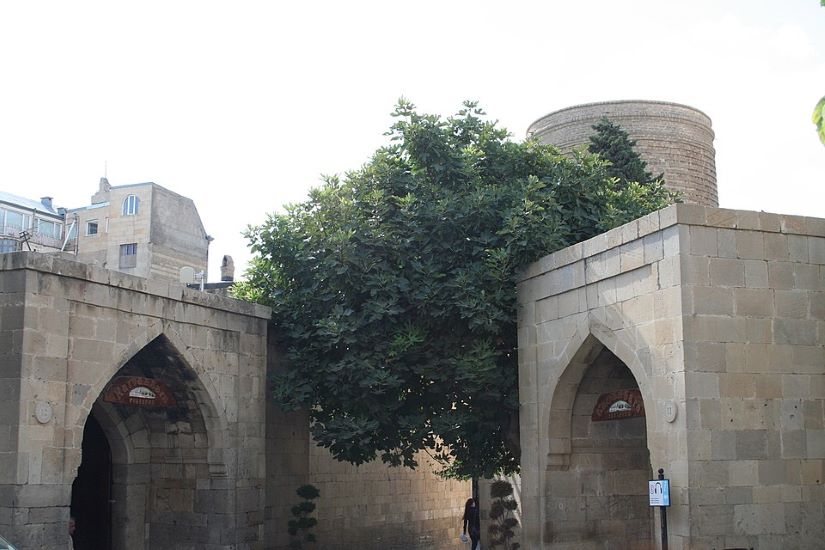
Nizami Ganjavi Monument
The Nizami Ganjavi Monument is dedicated to the famous poet Nizami Ganjavi in Baku. It is located in Nizami Square, at the intersection of three important streets. The monument has been a landmark of Baku since 1949. The 6-meter-high statue is made of bronze. The statue is placed on a 9-meter octahedral pedestal. The poet is depicted in a thoughtful pose with a book in his hand. The pedestal is made of red labradorite stone. The design reflects the architectural elements of Azerbaijan at the time. The sculptor aimed to reflect the spirit and works of the poet. The monument symbolizes Nizami's great role in literature. It has an important place in the cultural heritage of Azerbaijan.
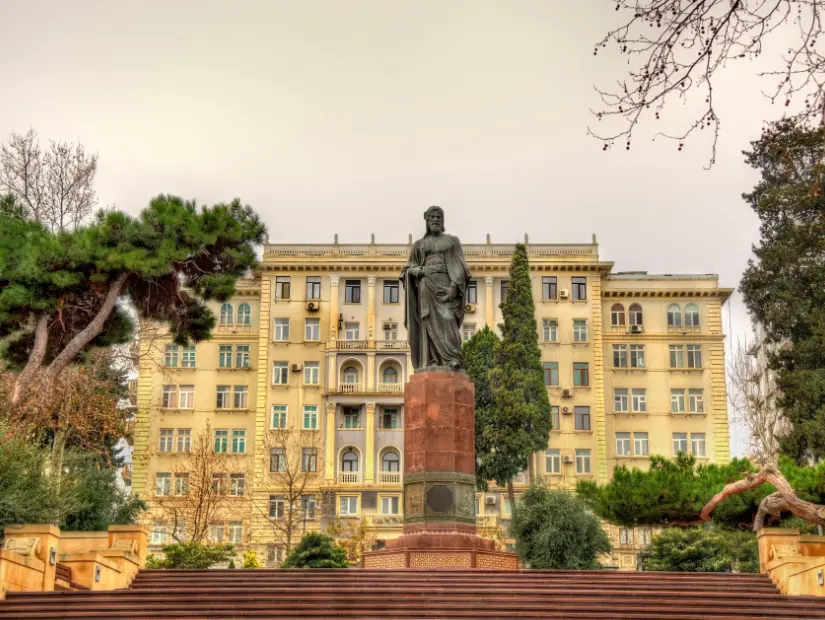
Freedom Square (Azadlik Square)
Freedom Square is one of the symbolic squares of Azerbaijan in the center of Baku. Previously known as “Lenin Square”, this area was important in the struggle for independence. When independence was declared in 1991, it was renamed “Freedom Square”. The square symbolizes Azerbaijan’s struggle for freedom. It covers an area of approximately 200 thousand square meters. It has become a symbol of Baku with the buildings surrounding it. There are statues and monuments in the square reflecting the history of independence. It hosts various events throughout the year. Concerts, festivals and celebrations are held here. These events reflect the spirit of independence. Freedom Square showcases the history and culture of Azerbaijan. The square keeps the memory of the struggle for independence alive.
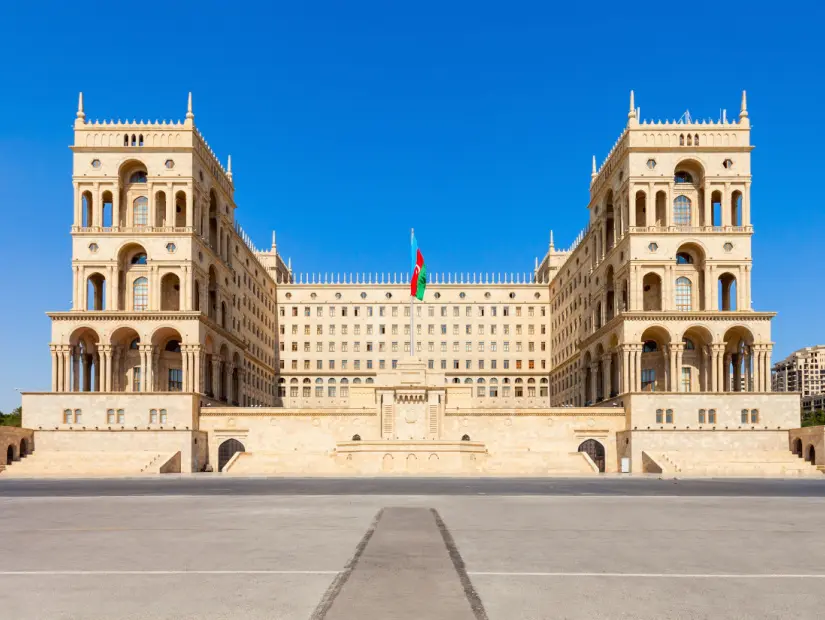
Qosha Qala Gate
Qoşa Qala Gate is a historical structure located in the Icherişehir district of Baku. It is located on the northern wall of the Baku Fortress, on the ancient caravan route. It consists of two gates; the first was built in the 1886th century. The second gate was added in the XNUMXth century. In XNUMX, these two gates were combined. Qoşa Qala is a monument reflecting the historical richness of Baku. It is surrounded by pentagonal walls and decorated with towers. Visitors discover the ancient history of Baku at the gate. This gate is ideal for getting to know the cultural heritage of Baku.
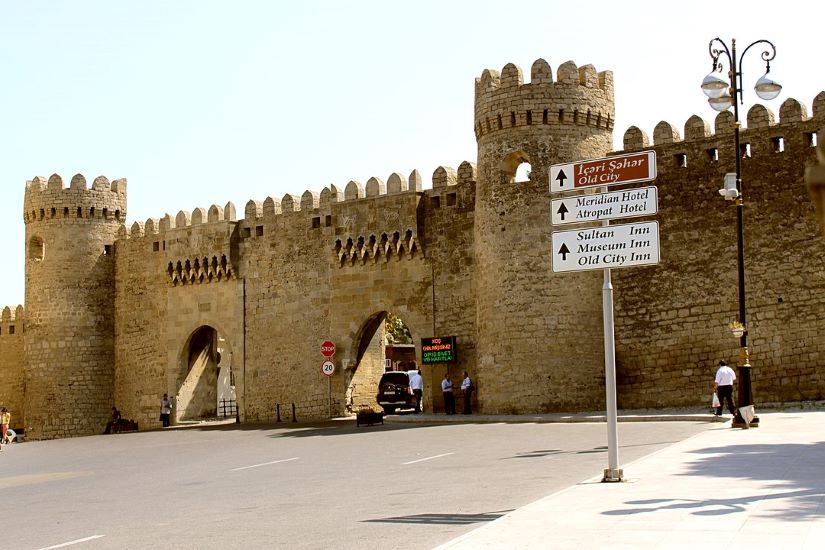
Ramana Castle
Ramana Fortress is a historical structure located in Sabuncu district of Baku. It was built by Shirvanshahs in the 14th century. It is on the UNESCO Reserve list. The fortress attracts attention with its four-story square tower design. Defensive towers strengthen the outer walls of the fortress. There is an arched gate and a defensive square at the entrance. The inner courtyard emphasizes the solid structure of the fortress. Visitors can examine the historical and architectural details. It is possible to watch the surrounding views from the fortress. Ramana Fortress has an important place in the cultural heritage of Azerbaijan. It is a must-see for everyone exploring Baku.
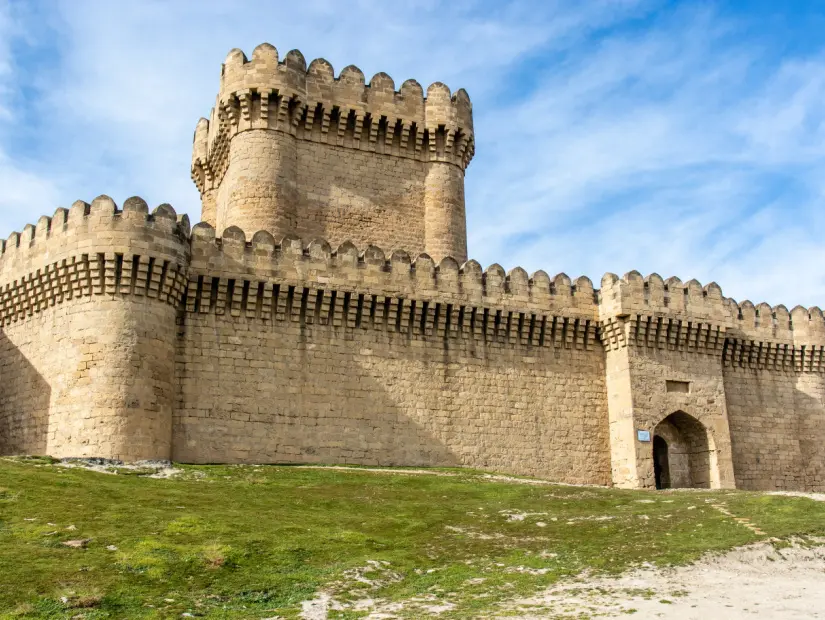
Martyrs' Lane
Martyrs' Alley is a sacred memorial park located in the center of Baku. It was established in memory of the soldiers who lost their lives in the 1918 Battle of Baku. It covers a large area of approximately 100 thousand square meters. In the center of the park is a 35-meter-high monument. The monument has a soldier figure symbolizing the struggle for independence. It is a special place for Azerbaijan's struggle for independence and its martyrs. The park contains statues for independence and the martyrs of Nagorno-Karabakh. Ceremonies are held every year on important days such as Victory Day. Martyrs' Alley is an important park that keeps the memory of Azerbaijan's independence alive.
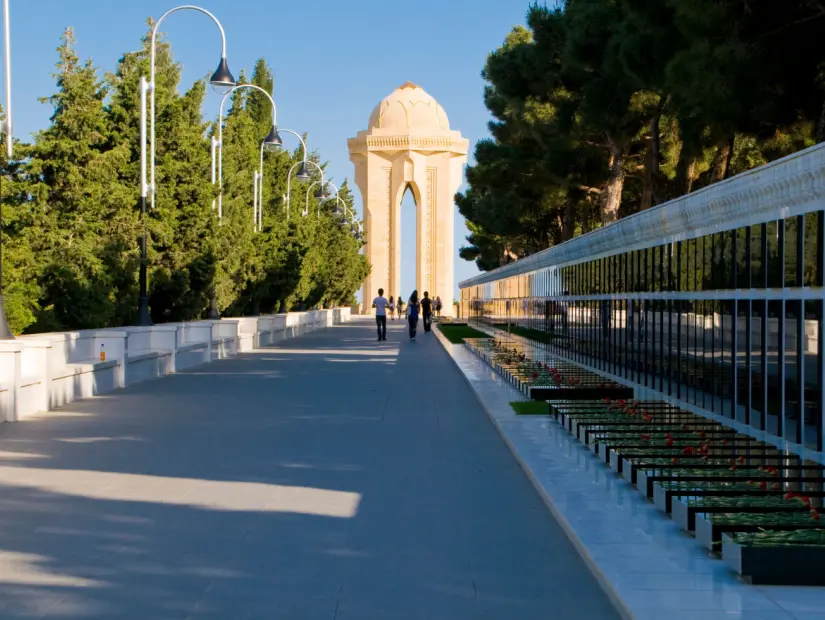
Palace of the Shaki Khans
The Sheki Khans Palace is the pride of Sheki and is an 18th-century structure. The interior of the palace is famous for its eye-catching decorations and intricate patterns. The walls, ceilings and floors are decorated with mosaics. Visitors walking around the palace feel like they are in a fairytale world. Each room tells a different story. Some rooms reflect the lifestyle of the royal family. Other rooms showcase the art and culture of the period. The exterior of the palace is also fascinating with gardens, fountains and statues. The chirping of birds and the sound of water in the gardens are soothing. The Sheki Khans Palace is ideal for lovers of history and culture. Visitors have the opportunity to discover the rich culture of Azerbaijan.
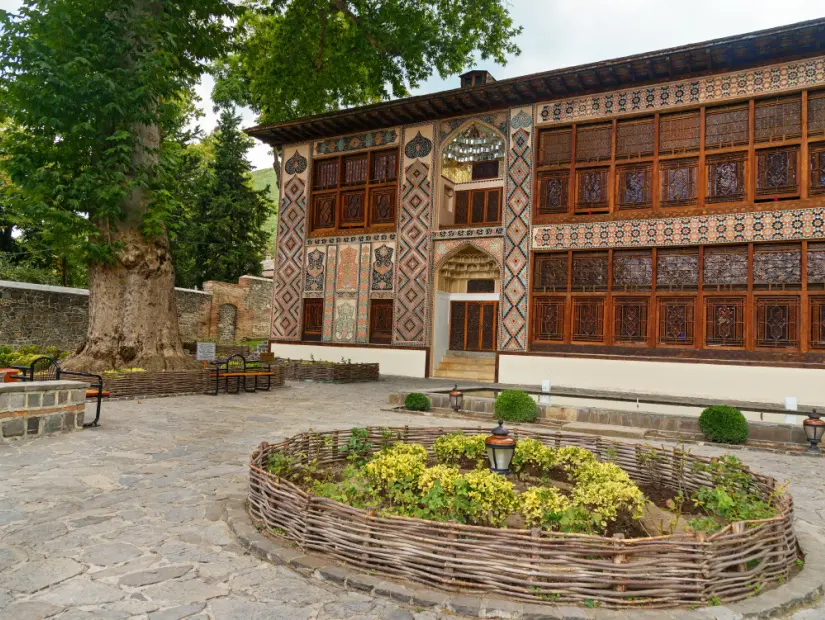
Shaki Castle
Sheki Castle is an important structure built in the 18th century. It rises in a high position in the city center. Its walls extend for 2 kilometers and are 10 meters high. There are watchtowers and bastions around the castle. There are structures such as a mosque, a bathhouse and a cistern inside the castle. Sheki Castle is a unique example of Azerbaijani architecture. Its walls are decorated with white stones and carved motifs. Its traditional wooden doors attract attention. The mosque, bathhouse and cistern reflect the architectural tradition. Sheki Castle is important as a historical and cultural heritage. It is one of the symbols of Sheki and awaits visitors.
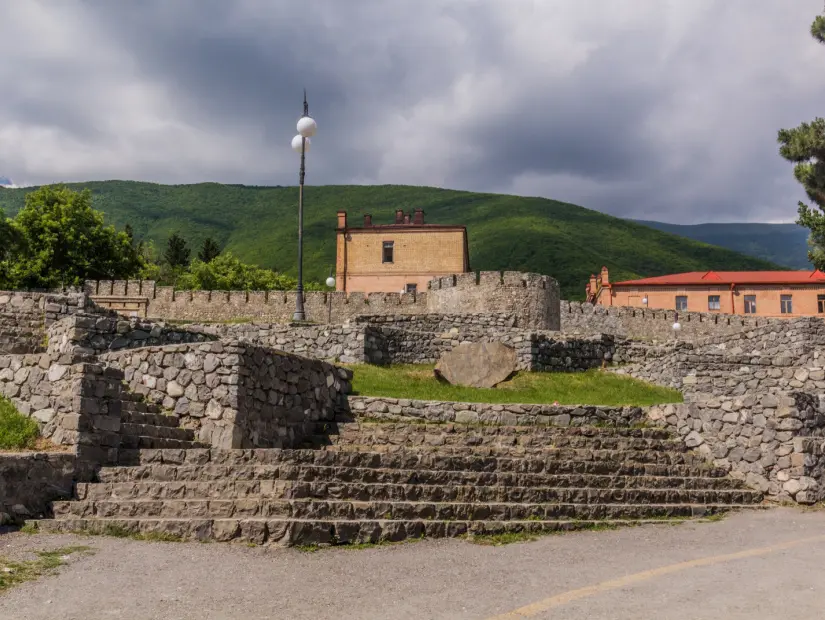
Palace of the Shirvanshahs
The Shirvanshahs Palace stands out as one of Baku’s fascinating historical heritages. It was built by the Shirvanshahs dynasty in the 15th century. The complex offers a structure that showcases the rich history of Azerbaijan. The main building, divanhane, mausoleum and mosque are all in one. The main building of the palace is two-story and full of spacious rooms. The rooms were used for both private living spaces and state affairs. The interior decorations reflect the artistic finesse of the period. Divanhane is a building where the administrative affairs of the palace were carried out. The building is dazzling with its elegant decorations. The fountain served as a water tank and a washing area. It is known to have played an important role in daily life. The mausoleum is a sacred place where the Shirvanshahs dynasty were buried. It is impressive with its elegant dome and stonework. The mosque of the palace is a special area for religious worship. Its minaret and mihrab reflect the religious atmosphere of the period. The Shirvanshahs Palace presents the history and culture of Azerbaijan to visitors.
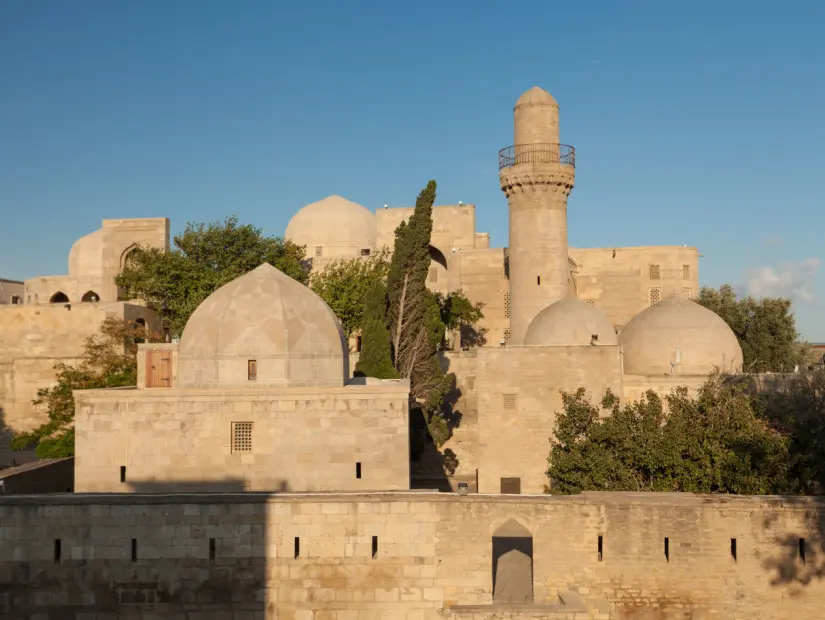
Bottle House
The Bottle House is a unique structure located in the city of Ganja, Azerbaijan. It was built in 1966-1967 by Ibrahim Jafarov. The house was built using 48.000 bottles and has two floors. It is located on a total area of 200 square meters. The first floor is designed as an apartment and the second floor as a balcony. The house is completely covered with bottles, and different colors and sizes were carefully selected. Jafarov built this house as a memorial after his brother was lost in World War II. The Bottle House has a special place both architecturally and culturally. The story of the house symbolizes Jafarov's love for his brother.
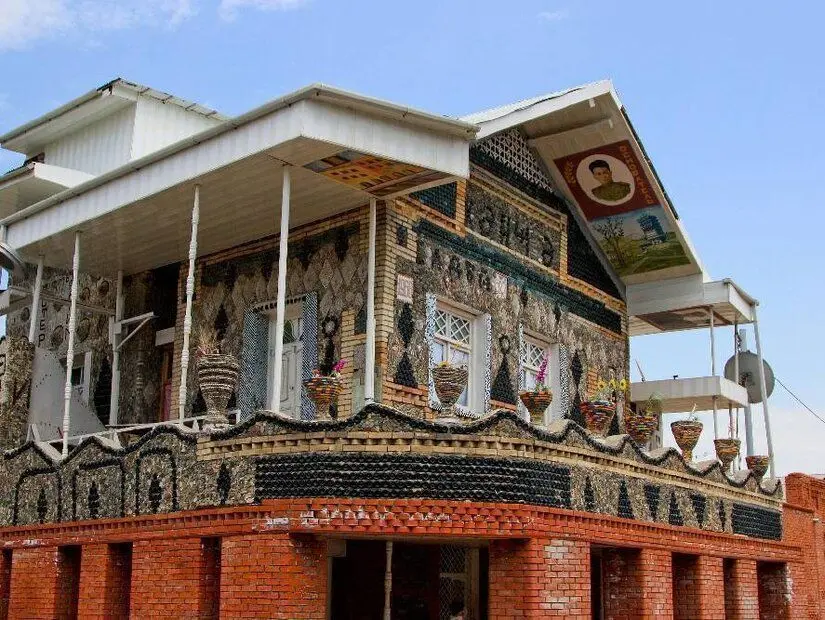
Zaqatala Castle
Zagatala Fortress is located in the city of Zagatala in northern Azerbaijan. It was built in the 19th century and has become the symbol of the city. The fortress is located at a high point in the city center. It attracts attention with its 2-kilometer-long and 10-meter-high walls. It has towers and bastions on all four sides. Inside the fortress are a mosque, a bathhouse and a cistern. Zagatala Fortress is an impressive example of Azerbaijani architecture. The walls made of white stone are decorated with carefully carved motifs. Its wooden doors and interior structures reflect the traditional style. It has an important historical and cultural value. Zagatala Fortress attracts the attention of many tourists every year. It offers a magnificent structure at the foot of the Caucasus Mountains. It is ideal for discovering the history and culture of Azerbaijan.
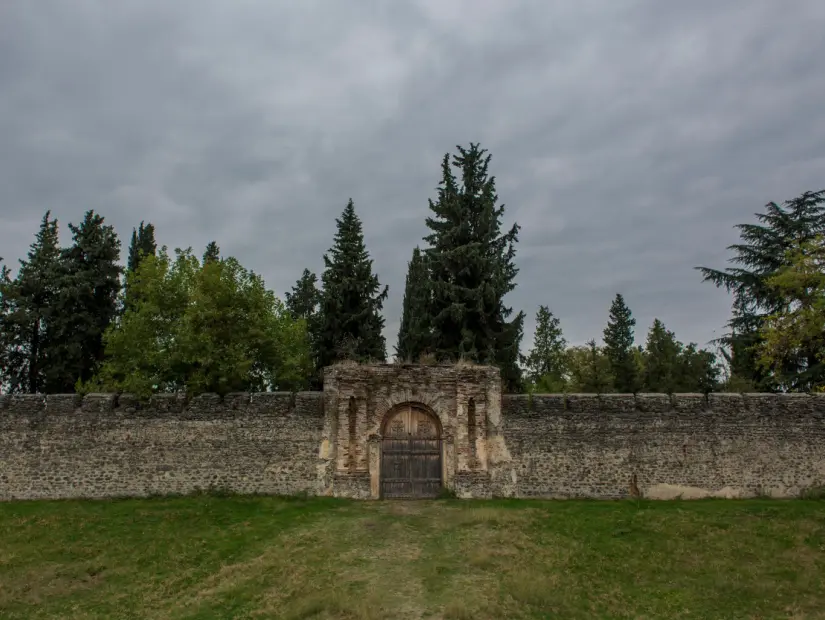
The historical sites of Azerbaijan not only carry traces of the past, but also offer cultural richness. From the Azykh Cave to the Sheki Khans Palace, each site provides an important key to understanding the history, art and culture of Azerbaijan. These historical sites, both natural and structurally unique, shed light on Azerbaijan's past and take visitors on a journey into the depths of the past. While exploring these sites, you will not only see historical structures, but also witness the cultural heritage of Azerbaijan.
Religious Buildings to Visit in Azerbaijan
Azerbaijan is notable for its historical and cultural richness as well as its religious structures. The country is home to many important structures belonging to different religions, and these structures are of great importance both in terms of architecture and religion. Religious structures in Azerbaijan are not only places of worship, but also symbols that reflect the country's cultural diversity and tolerance. These structures offer visitors the opportunity to follow the traces of the past, learn about religious traditions, and discover Azerbaijan's rich spiritual heritage. These sacred sites, stretching from Baku to Sheki, stand out as important points where Azerbaijan's different religious beliefs and cultural layers come together.
Ajdarbey Mosque
Ajdarbey Mosque has an important place in the rich historical and cultural heritage of Baku. It was built in the 19th century by Ajdarbey Ashurbeyov. Asia and Europe It combines architectural styles. Also known as Goy Mosque, it stands out with its blue dome. Its minaret gives the mosque an aesthetic elegance. katar. The interior includes Ottoman, Seljuk and Persian elements. The decorations and the pulpit offer a visual feast. The mosque is close to many historical buildings in the center of Baku. Azerbaijani flavors can be tasted in the restaurants and cafes. Ajdarbey Mosque symbolizes peace and brotherhood. Sunni and Shiite imams pray together here. It is also open to visitors of different religions. It offers a tolerant atmosphere.
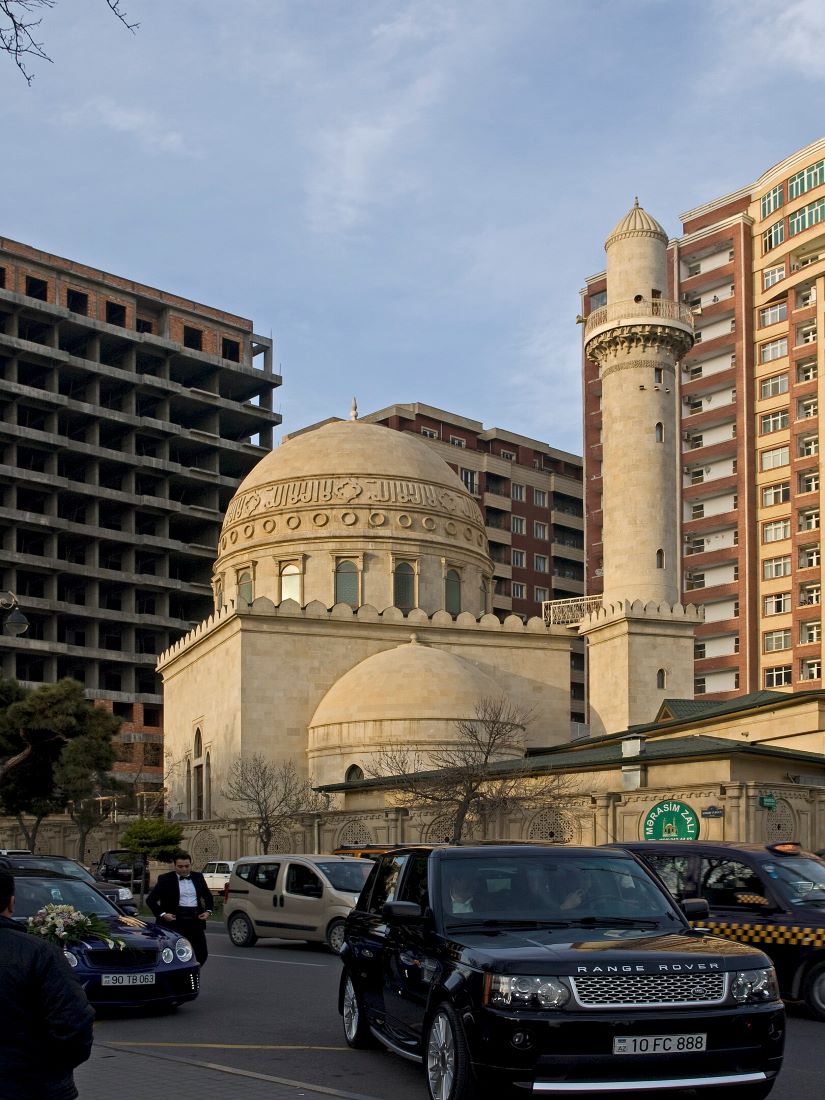
Baku Heydar Mosque
Baku Haydar Mosque was opened in 2014 in memory of former Azerbaijani President Heydar Aliyev. It was designed by Adalet Mammadov, inspired by traditional Islamic and Ottoman architecture. The largest mosque in Azerbaijan, Haydar Mosque is 82 meters high. It stands out with its four minarets and capacity for 20 thousand people. The interior features wood carving, tile work and stained glass art. The main dome is covered with 15 thousand gold leafs. Baku Haydar Mosque is an important religious and cultural symbol. It hosts millions of visitors from all over the world. It reflects the rich heritage of the country with its modern structure.
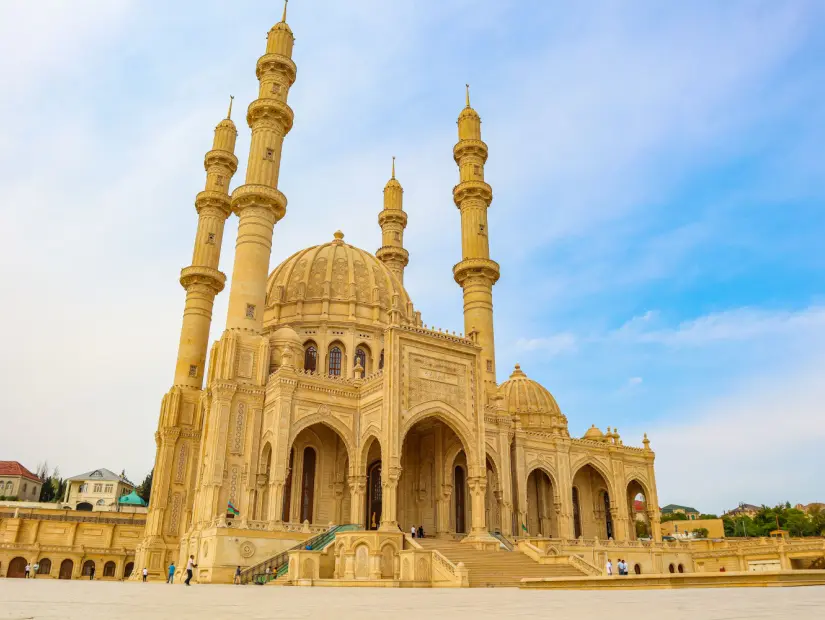
Baku Grand Mosque (Friday Mosque)
Baku Grand Mosque contributes greatly to the rich history and culture of the city. Built in the 12th century, this mosque is a rare example of Seljuk architecture. Designed by the architect Mahmud and supported during the Shirvanshah period, the mosque has a four-iwan plan around a square courtyard. Its main dome is 24 meters in diameter and 42 meters high. It is built with solid stone and brick walls. The interior is elegantly decorated with calligraphy. The pulpit and mihrab present examples of fine carvings. Baku Grand Mosque attracts the attention of both locals and tourists. The mosque is one of the symbolic structures of Baku.
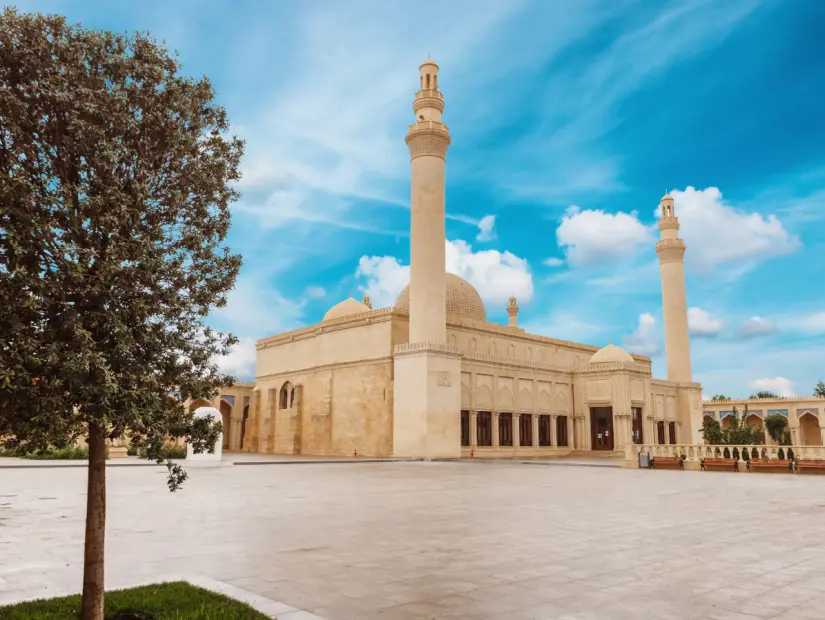
Bibiheybet Mosque (Bibi-Heybat Mosque)
Bibiheybet Mosque is a historical and religious structure located in Baku. It was first built in the 13th century by Shirvanshah II. Farrokhzad. The mosque, which was destroyed in the 1930s, was rebuilt with its original architecture in the 1990s. The mosque contains the tomb of Ukeyma Khanum, the daughter of Shirvanshah II. Farrokhzad. Ukeyma Khanum was a descendant of the Prophet Muhammad. Bibiheybet Mosque is one of the largest mosques in Azerbaijan. It attracts attention with its four minarets and rectangular plan. The interior is decorated with blue and green tones. The walls are meticulously decorated with various motifs. Bibiheybet Mosque is one of the spiritual centers of Azerbaijan. It is visited by thousands of Muslims every year. It is an important symbol reflecting the traditional Islamic architecture of Azerbaijan.
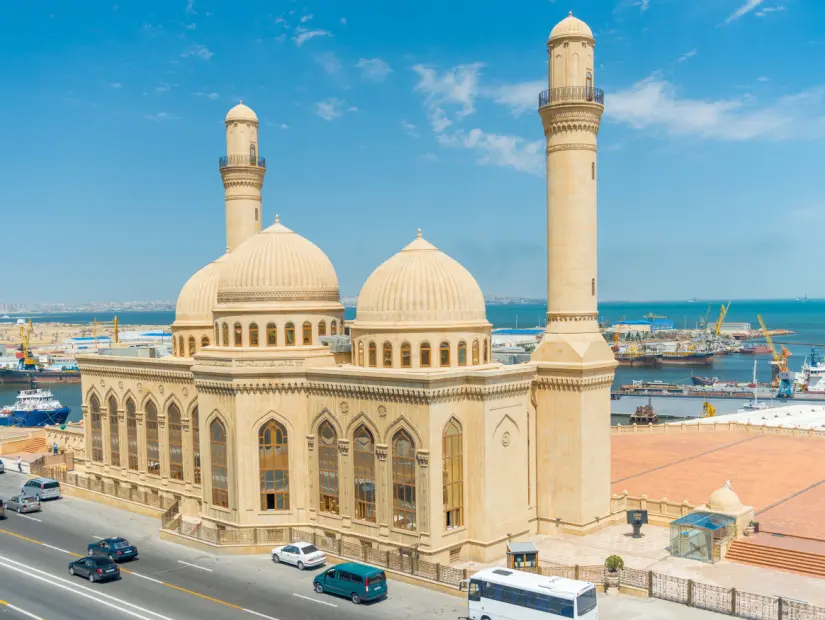
Diri Baba Tomb
Diri Baba Mausoleum was built in the 15th century in Gobustan, southern Azerbaijan. It has a mysterious structure and a unique architecture carved into the rock. The mausoleum has a two-story structure and is interesting. On the first floor is a room where Diri Baba's tomb is located. The second floor offers a magnificent view of Gobustan from the balcony. Its exterior is decorated with carefully carved motifs. Diri Baba Mausoleum is one of the important sightseeing spots of Azerbaijan. It reflects the characteristic features of traditional Azerbaijani architecture. The mausoleum offers its visitors an unforgettable experience.
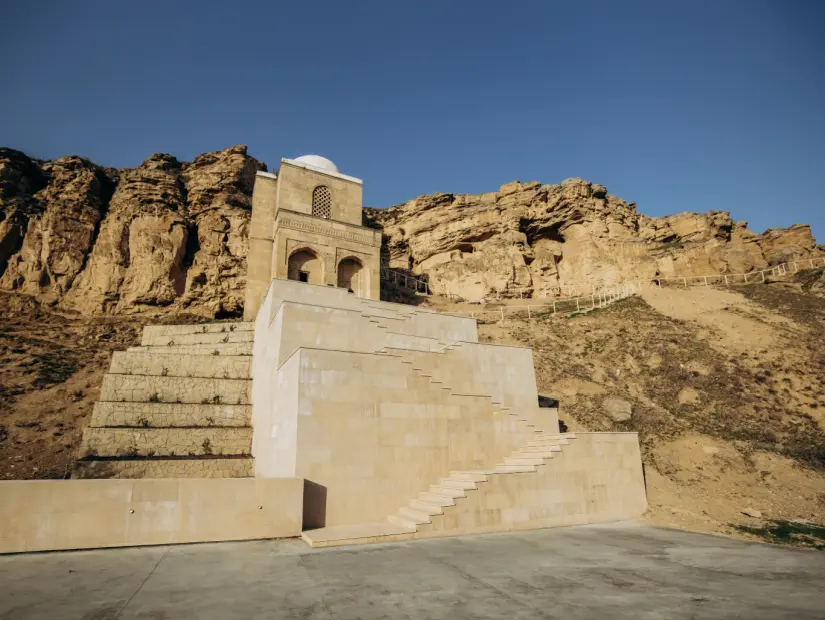
Russian Orthodox Church of Ganja
The Russian Orthodox Church in Ganja is an important part of the rich historical heritage of Azerbaijan. Built in the 19th century, the church stands out with its aesthetic architecture. The interior is decorated with fine workmanship and striking details. High minarets and an elegant dome complete the exterior. The church is frequently visited by both locals and tourists. Visitors have the opportunity to get to know the history and culture of Azerbaijan closely. A visit to the church invites you to discover art and culture. The green areas around it offer a peaceful environment. Natural areas emphasize the architecture of the church and offer a visual feast.
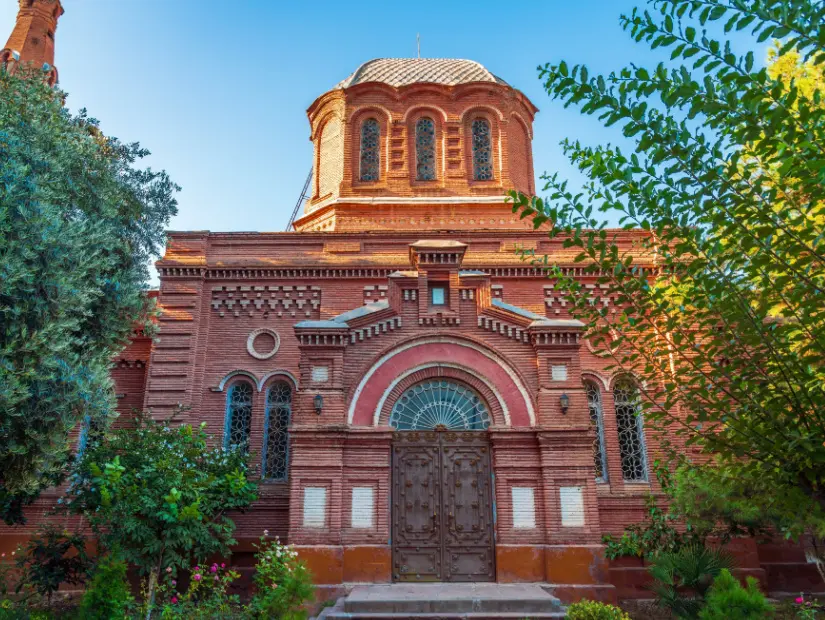
Tomb of Mumine Hatun
The Mausoleum of Mumine Hatun was built by Kizil Arslan in the 12th century in Nakhchivan. It was built in memory of his mother Mumine Hatun. The mausoleum is located in a central location within the historical city walls. It has a rectangular plan and is covered with an elegant dome. The height of the mausoleum reaches 25 meters. The exterior is covered with white stones and decorated with carved motifs. The Arabic phrase “Mausoleum of Mumine Hatun” is written on the entrance gate. The interior is enriched with wooden ornaments. The Mausoleum of Mumine Hatun is an important example of Azerbaijani architecture. It carries the characteristics of traditional Azerbaijani architecture. The mausoleum is one of the symbols of Azerbaijani history and culture. It is visited by thousands of tourists every year.
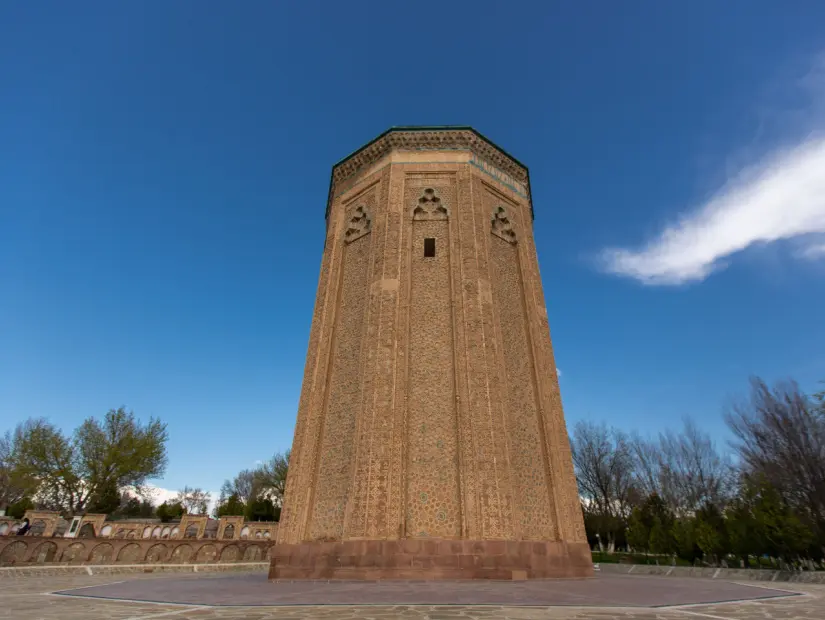
Omer Efendi Mosque
The Omer Efendi Mosque was built in the 18th century in the city of Sheki in northern Azerbaijan. It is located at the foothills of the Caucasus Mountains and is a historical structure. It was damaged in a fire in 1986 and restored in 1987. The mosque has a rectangular structure reflecting traditional Azerbaijani architecture. Its elegant dome is 25 meters high. The minarets on the four corners reach a height of 35 meters. Its white stone-clad exterior is decorated with carved motifs. The phrase “House of Allah” is written above the entrance door. The interior is impressive and decorated with wooden ornaments. The courtyard contains elements such as a fountain and a pool. The Omer Efendi Mosque is one of the symbols of Sheki.
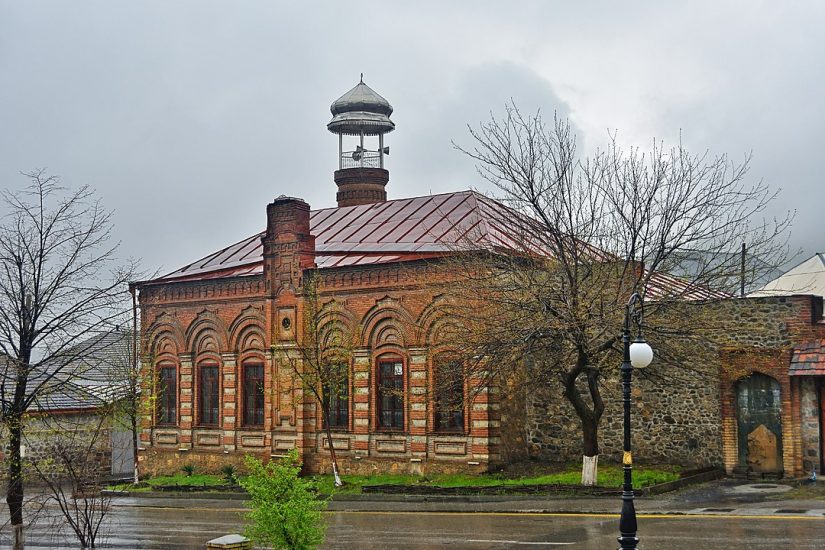
Seyyid Yahya Tomb
Seyyid Yahya Mausoleum is one of the historical and cultural riches of Baku. The mausoleum was dedicated to Seyyid Yahya, the second founder of the Halveti order in the 15th century. Seyyid Yahya is known as a Sufi, scholar, poet and philosopher. The mausoleum is located in the central courtyard of the Shirvanshah Palace Complex. It is a square-plan, single-domed, wooden structure. Next to it is the Keygubad Mosque, where Seyyid Yahya worshipped. The Keygubad Mosque is one of the oldest mosques in Baku. Both the mausoleum and the mosque are on the UNESCO World Heritage List. While visiting the mausoleum, visitors also discover other points of Icherishehir. The mausoleum reflects the spiritual and cultural heritage of Azerbaijan. The life and thoughts of Seyyid Yahya are commemorated here. It is a special place that everyone who comes to Baku should visit.
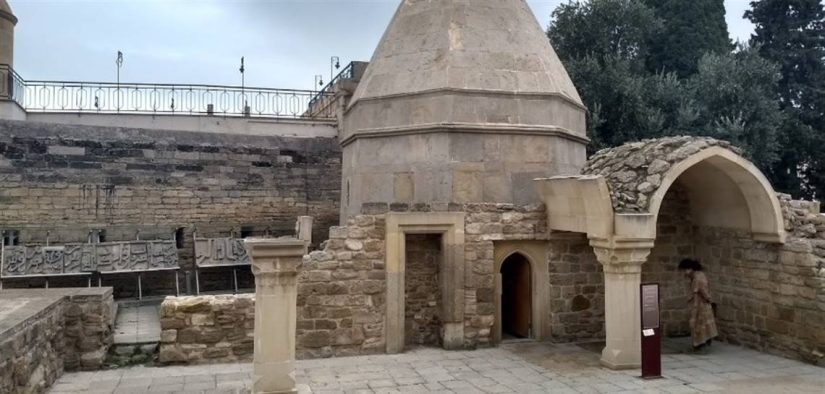
Shah Abbas Mosque
Shah Abbas Mosque was built in the 17th century in the city of Ganja, Azerbaijan. It was built by the order of the Safavid ruler Shah Abbas. The mosque is an important architectural example reflecting the history of Ganja. It attracts attention with its impressive dome and two minarets. There are porticos and a large courtyard around the mosque. The interior is decorated with colorful tiles, embroidery and inscriptions. Shah Abbas Mosque is ideal for those who want to explore the cultural heritage of Azerbaijan. Visitors can experience the beauty of mosque art here. The mosque attracts attention with its location on the Silk Road.
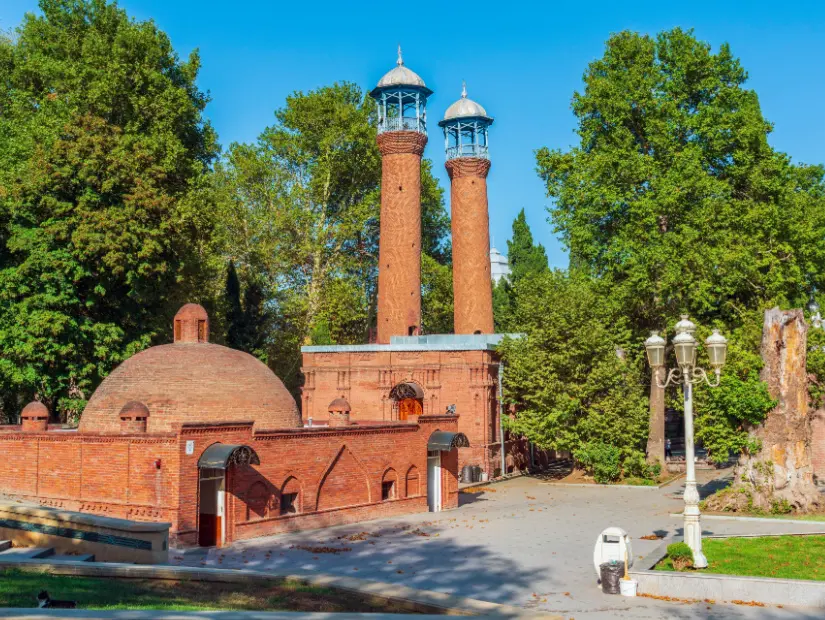
The Sheki Albanian Church symbolizes a deep-rooted history in the city of Sheki, Azerbaijan. Built in the 12th century, it is one of the oldest Christian churches in the region. It is located in the village of Kish and has been recognized as a UNESCO World Heritage Site. The church reflects the rich history and culture of Azerbaijan. It houses a museum and open graves. The museum displays traditional art and cultural items. The open graves display skeletons dating back to the Bronze Age. Next to the church is a statue of explorer Thor Heyerdahl. Heyerdahl claimed that the Albanians were the ancestors of the Vikings. The Sheki Albanian Church is an important discovery point for those interested in history. With its location on the Silk Road, it offers visitors a fascinating atmosphere.
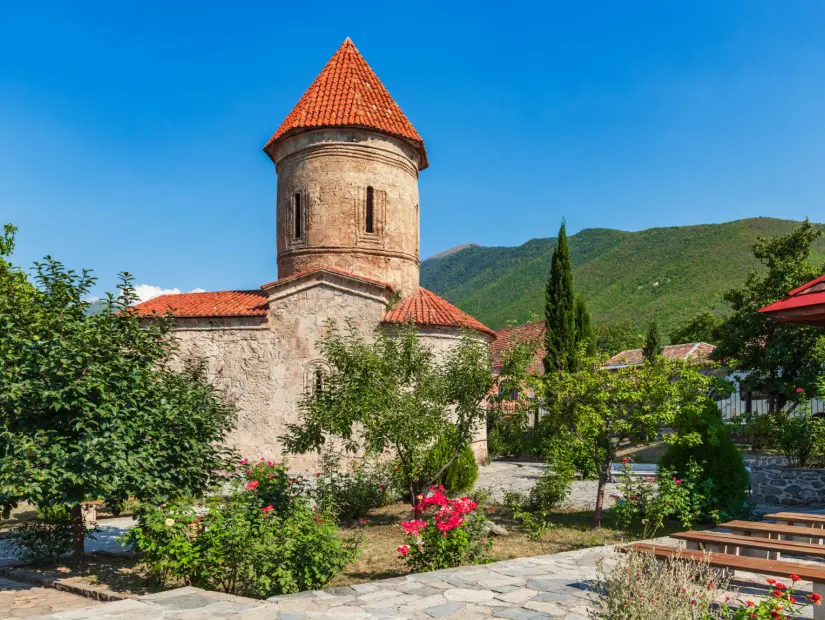
Taze Pir Mosque
Taze Pir Mosque is a historical and cultural structure located in Baku. It was built in 1905 in the neo-classical style. It was designed by the architect Ziver bey Ahmedbeyov. The mosque was financed by Nebat Hanım Ashurbeyova. Its 28-meter-high dome is decorated with a golden crescent and star. The walls covered with blue and white tiles complete the aesthetic appearance. The interior is decorated with calligraphy and elegant carvings. The minbar and mihrab present examples of meticulously crafted carvings. Taze Pir Mosque attracts the attention of locals and tourists. As one of the symbolic structures of Baku, it reflects the cultural richness.
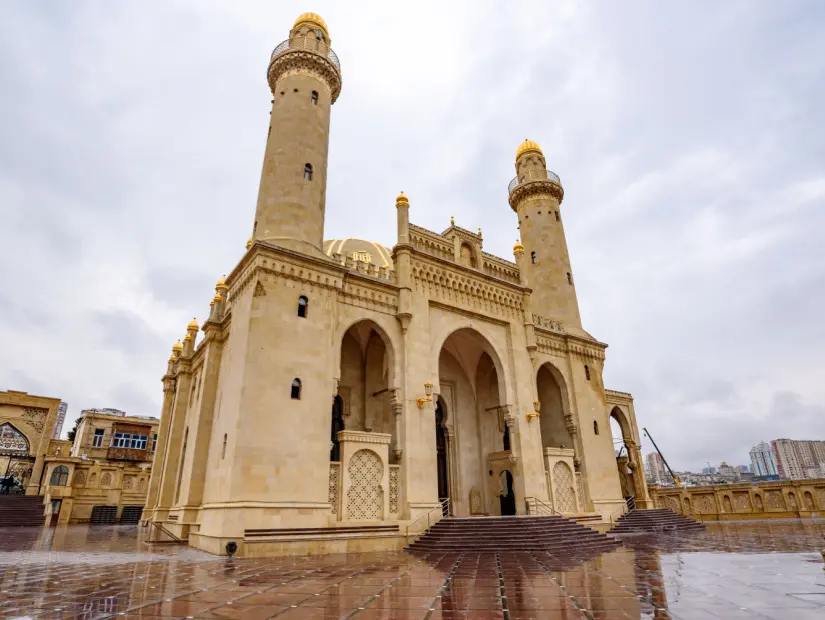
Religious buildings in Azerbaijan are not only architectural wonders, they also reveal the spiritual identity of the country. Buildings such as the Ajdarbey Mosque, Baku Haydar Mosque and Seyyid Yahya Mausoleum represent different faiths, cultures and historical periods, and symbolize the Azerbaijani people's commitment to tolerance and religious diversity. By visiting these buildings, you not only have a religious experience, but also have the opportunity to get to know the rich history and culture of Azerbaijan. Each one offers visitors an in-depth exploration of history, art and spiritual values, and contributes to the cultural heritage of Azerbaijan.
Museums to Visit in Azerbaijan
Azerbaijan stands out with its historical and cultural riches, and also offers a destination worth exploring with its impressive museums. The country is home to numerous museums that preserve traces of the past and showcase its cultural heritage. Museums in Azerbaijan showcase not only art and history, but also the traditions, lifestyles and culture of the people. Each museum offers visitors a different experience, providing them with the opportunity to deeply explore the country's cultural diversity and history. The works exhibited in these museums consist of important collections from both local and international artists, and tell the story of Azerbaijan's rich past, where different cultures coexist.
Azerbaijan Independence Museum
The Azerbaijan Independence Museum is a museum in Baku that tells the story of Azerbaijan's struggle for independence. It began with the foundation of the Azerbaijan Democratic Republic in 1919. It was opened in 1961 as the Lenin Museum, and its name was changed after independence in 1991. The museum has three floors, each floor covering a specific topic. The first floor focuses on the general history and culture of Azerbaijan. The second floor focuses on the foundation and development of the Azerbaijan Democratic Republic. The third floor displays Azerbaijan's modern struggle for independence. The museum contains historical artifacts, documents and photographs. Personal belongings of those who participated in the struggle for independence are also on display. The museum is important for those who want to explore Azerbaijan's struggle for independence. It is a valuable discovery point for anyone visiting Baku.
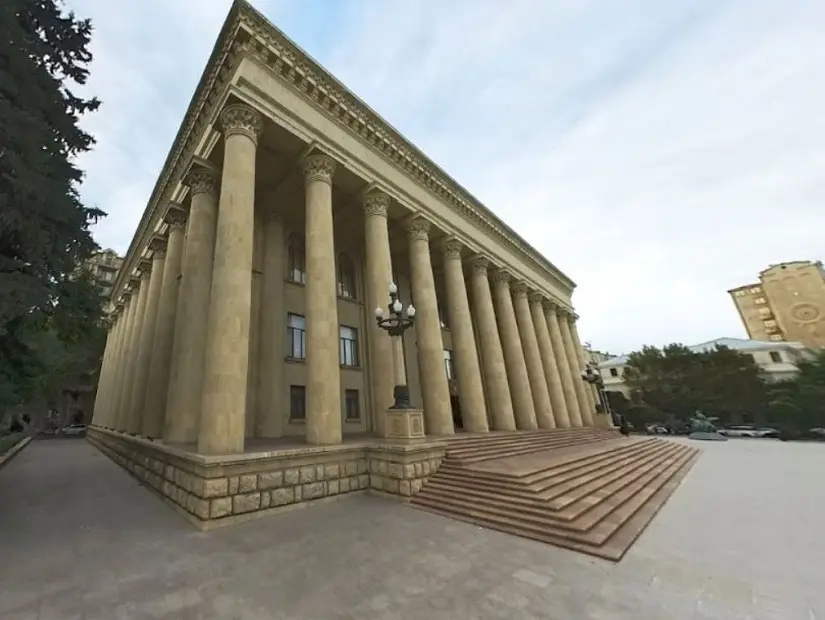
Azerbaijan Literature Museum
The Azerbaijan Literature Museum is an important focal point of Azerbaijani literature in the heart of Baku. Founded in 1939, the museum offers a rich collection with 30 main and 10 additional halls. The museum displays more than 3 manuscripts, rare books and objects. Works by prominent Azerbaijani poets and writers are housed here. Works by great figures such as Nizami Ganjavi, Fuzuli and Huseyn Javid are exhibited. The museum is an important resource for understanding the evolution of Azerbaijani literature. Works reflecting different periods offer a rich heritage. The Azerbaijan Literature Museum attracts the attention of local and foreign visitors. Thousands of visitors visit the museum every year. It is ideal for those who want to take an in-depth journey into Azerbaijani literature.
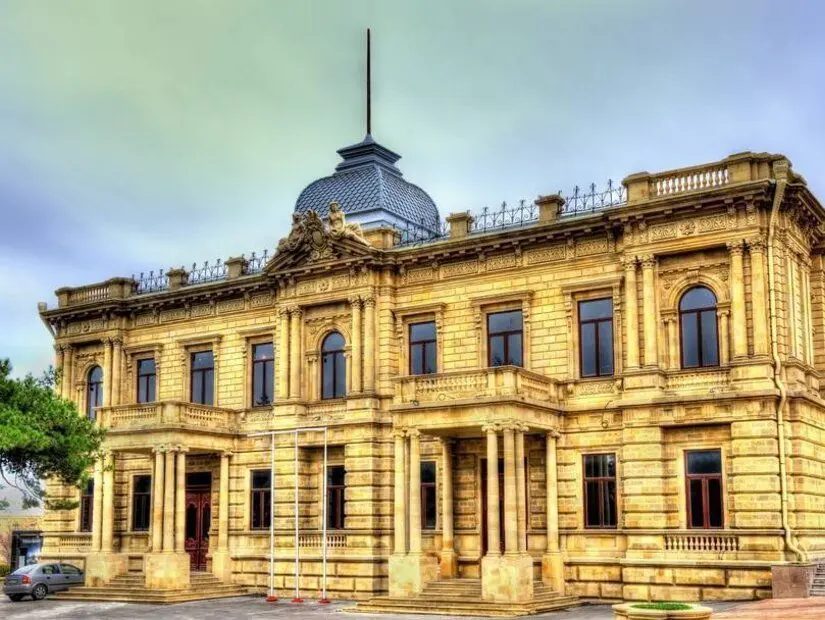
Azerbaijan Carpet Museum
The Azerbaijan Carpet Museum is located in Baku and houses the world's largest carpet collection. Established in 1967, the museum aims to promote the carpet weaving tradition of Azerbaijan. The museum displays 6.000 carpets. The carpets are woven using various techniques and are decorated with colorful and unique motifs. The collection includes 17th century Ovchulug and Karabakh carpets. Ganja carpets are also important pieces of the museum. The museum plays a key role in preserving and promoting the cultural heritage of Azerbaijan. Thousands of visitors discover the beauty of Azerbaijani carpets every year. There are also exhibition areas that tell the history of carpet weaving. Visitors discover the details of the art of carpet weaving. The Azerbaijan Carpet Museum offers a cultural experience and inspires.
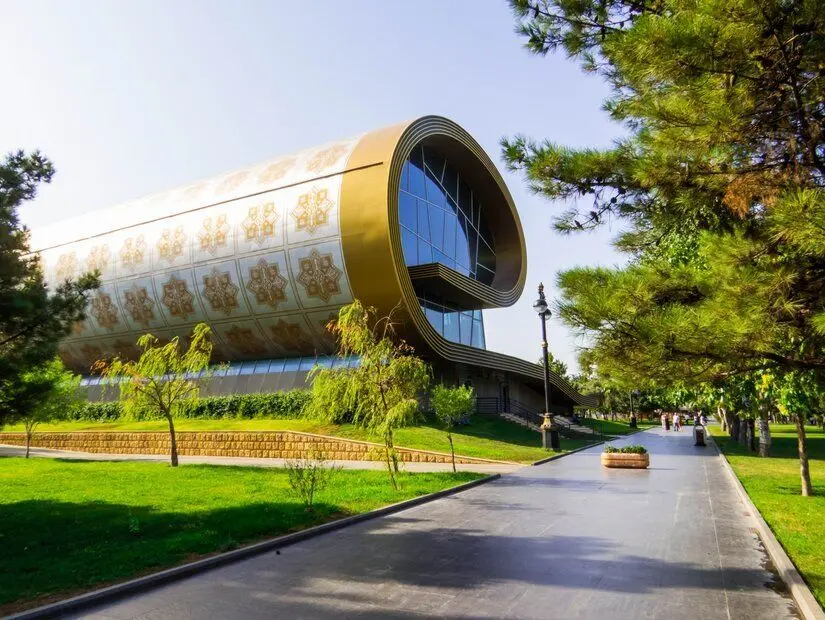
Azerbaijan Geology Museum
The Azerbaijan Geology Museum is a museum in Baku that displays the geological heritage of Azerbaijan. It was established in 1982 and is affiliated with the Ministry of Ecology of Azerbaijan. The museum consists of six different sections, each of which covers different topics. The regional geology section provides detailed information on soil formation and minerals. The properties of minerals, their formation processes and areas of use are also exhibited here. The mineral resources section introduces the ore deposits of Azerbaijan and presents samples. The petrography section explains rock types and their economic importance. The mineralogy section displays minerals from Azerbaijan and the world. The paleontology section displays the remains of extinct plants and animals. The special exhibitions section hosts temporary and permanent exhibitions. The museum also provides information on geological maps and research.
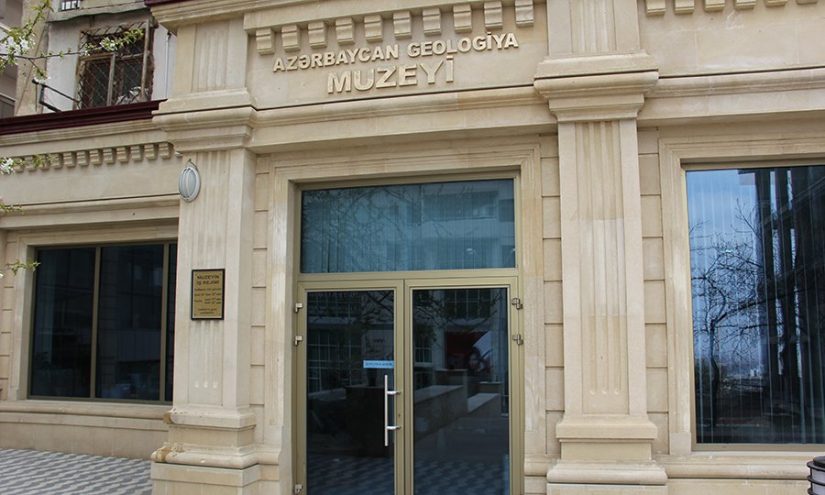
Azerbaijan National Museum of Fine Arts
The Azerbaijan National Museum of Fine Arts is the largest art museum in the country. Founded in 1936, the museum has a rich collection. The museum is housed in two separate buildings. The main building was built in 1937 and was named after Rustam Mustafayev in 1943. This building displays paintings, sculptures, ceramics and jewelry. The museum collection includes important works that reflect the artistic development of Azerbaijan. Works such as the Portrait of Sultan Suleiman and the Gypsy Girl are found here. The museum hosts temporary exhibitions of Azerbaijani and international artists. The Azerbaijan National Museum of Fine Arts is an important part of the cultural heritage. Thousands of visitors visit the museum every year.
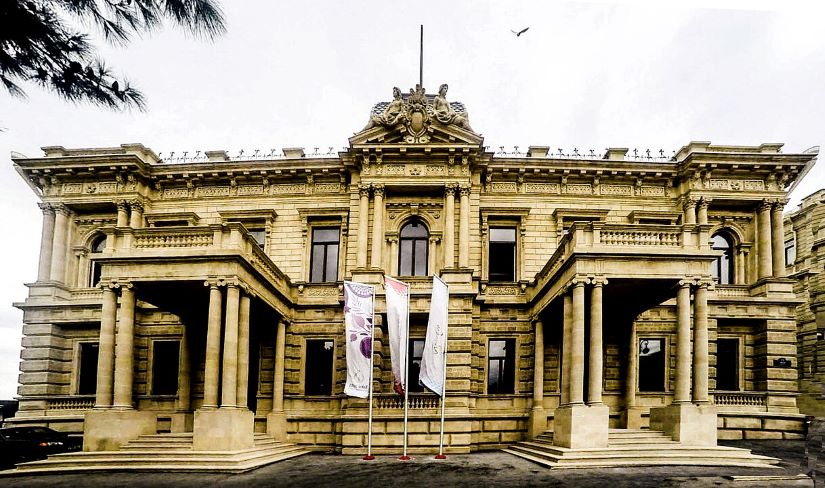
Azerbaijan National History Museum
The Azerbaijan National Museum of History is located in the center of Baku and is an important museum. Founded in 1920, the museum is located in the Ichershehir district. The museum consists of two main sections: the National Museum and the Oil Museum. The National Museum displays archaeological artifacts from the ancient times of Azerbaijan to the present day. The Oil Museum introduces the oil history and industry of Azerbaijan. The Ethnography Section contains many artifacts from the Stone Age to the Iron Age. The collection displays traditional clothing, objects and ornaments. The weapons collection consists of swords, shields and cannons. The jewelry collection consists of gold and silver jewelry.
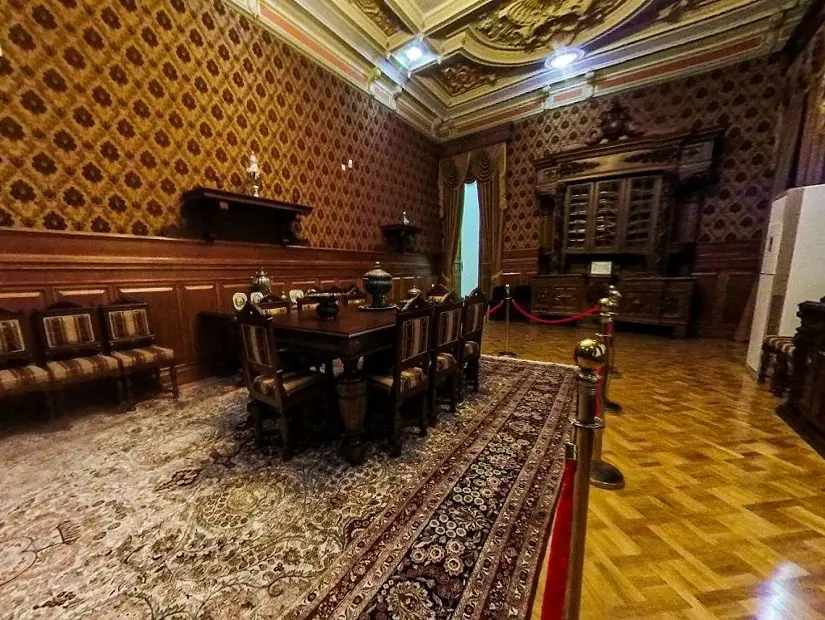
Baku Miniature Book Museum
Baku Miniature Book Museum was opened in Baku, the capital of Azerbaijan, in 2002. It is located in the Inner City, near the Shirvanshahs Palace. The museum exhibits approximately 10 thousand miniature books collected from around the world. The books are made of different sizes and materials. The largest book was made in Russia in the 19th century, its dimensions are 7.5×5.5 cm. The smallest book was made in the 19th century EnglandMade in , dimensions are 0.7×0.5 cm. The museum emphasizes the history and cultural significance of miniature books. Visitors have the opportunity to explore this special collection. Entry to the museum is free.
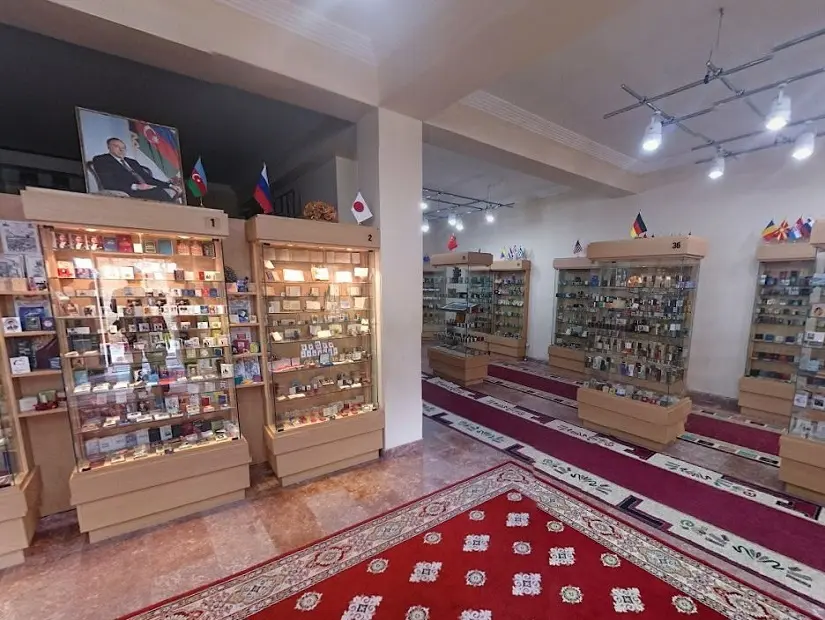
Baku Museum of Modern Art
Baku Museum of Modern Art is an important venue for contemporary art. It was opened to visitors in 2009 and is located on Neftchiler Boulevard. It houses the largest collection of modern art in Azerbaijan, with over a thousand works. The museum houses works by Azerbaijani and international artists. The collection consists of paintings, sculptures, photographs, videos and installations. Baku Museum of Modern Art makes significant contributions to the modern art scene.
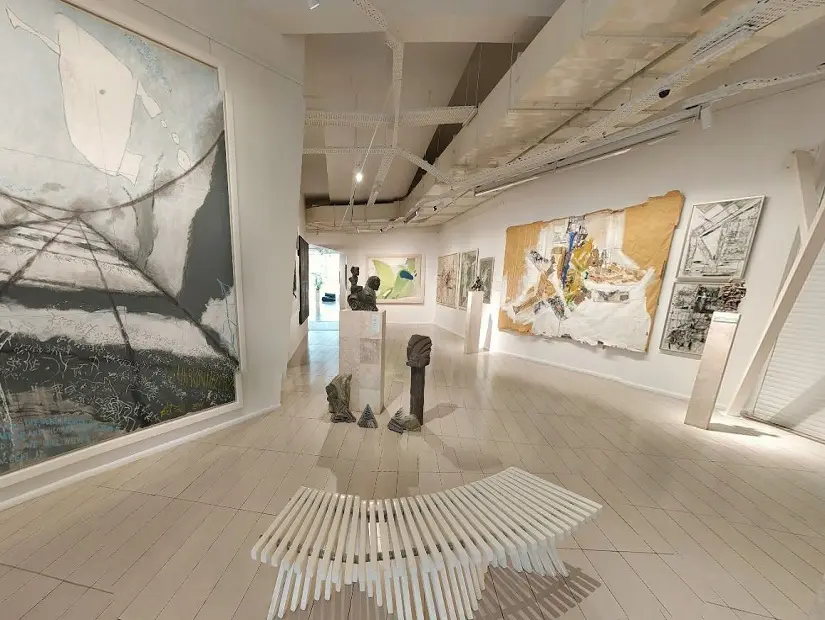
Baku International Mugam Center
Baku International Mugam Center is a music center located in Baku, the capital of Azerbaijan. It was opened on December 29, 2008 and is located on Baku Boulevard. The center aims to promote mugam, the traditional Azerbaijani music. The Concert Hall hosts a variety of musical genres with a capacity of 2000 people. The National Museum of Musical Instruments presents a collection of musical traditions of Azerbaijan. The Mugam School develops the musical genre by providing traditional mugam training. The center hosts Azerbaijani artists and international musicians. It aims to promote the culture and music of Azerbaijan to the world.
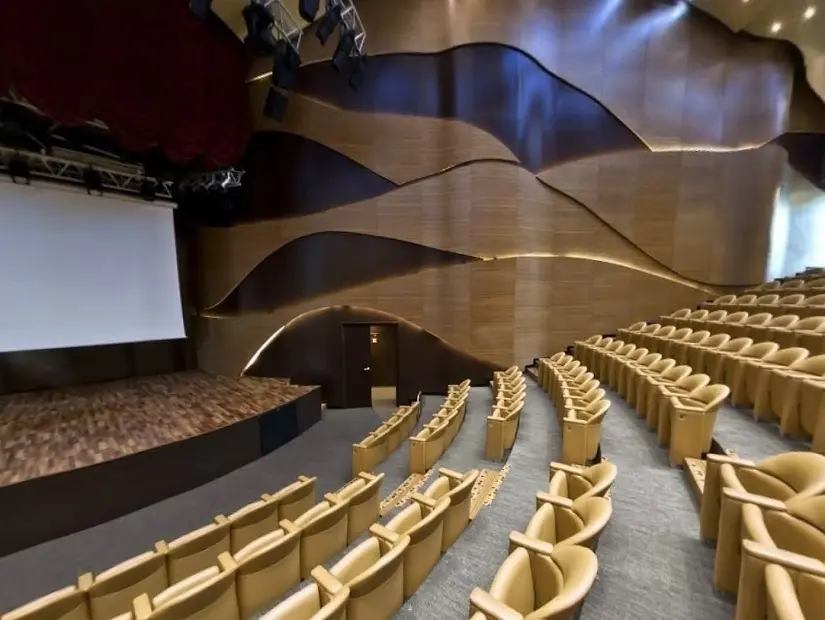
Sheki Museum of History and Local Lore
The Sheki Museum of History and Local Lore was founded in 1925. The museum is located in a historical mansion in the center of Sheki. Approximately 924 artifacts are exhibited on an area of 5000 square meters. The exhibits reflect the rich culture of Sheki and Azerbaijan. There are archaeological findings, historical artifacts, works of art and ethnographic elements. The archaeological artifacts date the history of Sheki back 2000 years. Artifacts from the Bronze and Iron Ages are exhibited. There are also artifacts from the Ottoman period and the Middle Ages. The artifacts come from the Sheki Khans Palace and mosques. The art collection includes local and Middle Eastern art. It displays ethnographic artifacts, traditional clothing, jewelry and musical instruments. The museum is of great interest to local and foreign tourists. It is a comprehensive resource for those who want to explore the history of Azerbaijan.
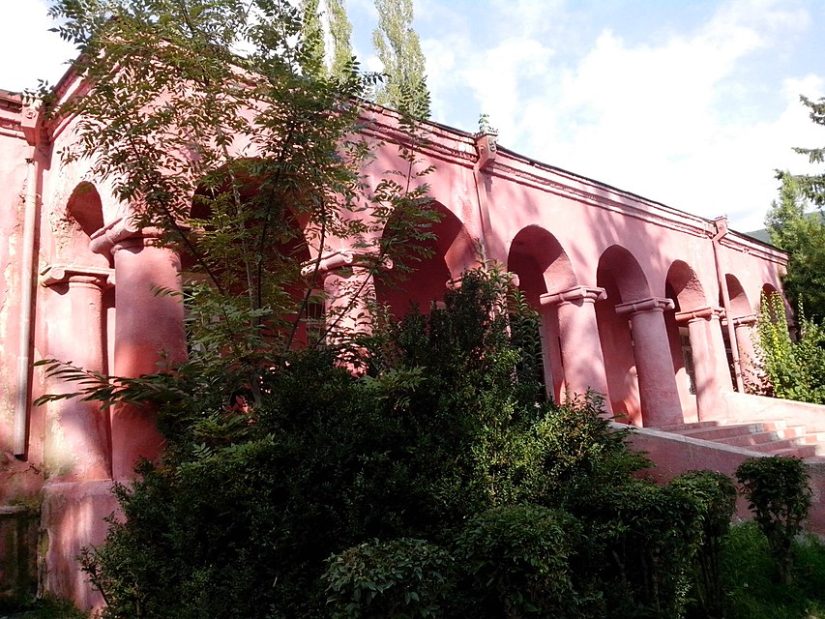
Museums in Azerbaijan appeal to visitors of all ages and interests, preserving the country’s cultural and historical heritage. From the Azerbaijan Independence Museum to the Azerbaijan Literature Museum, from the Carpet Museum to the Baku International Mugam Center, these rich collections are a great way to explore the country’s history, art and culture. These museums not only showcase works of art, but also provide a deep understanding of Azerbaijan’s past. Attracting both locals and foreign tourists, Azerbaijani museums introduce the country’s rich cultural heritage to a wider audience, providing an unforgettable experience for every visitor.
Parks and Natural Beauties to Visit in Azerbaijan
Azerbaijan is famous not only for its historical and cultural riches but also for its stunning natural beauty. The country is full of green areas, lakes, mountains and natural parks, which offer relaxing escapes where both locals and tourists can find peace. The parks and natural areas in Azerbaijan provide a destination worth exploring for nature lovers of all kinds. From the lush greenery of the Absheron Peninsula to the city-close parks in the center of Baku, every corner offers different beauty. These natural areas of Azerbaijan provide excellent opportunities for those who want to spend time in nature and explore the local ecosystem.
Absheron National Park
Absheron National Park is located 20 km south of Baku and covers an area of 7,83 km². Established in 2005, the park aims to protect biodiversity. It aims to preserve the natural richness of the Absheron Peninsula. The park is home to rare and endangered species. Endemic plants such as Absheron hyacinth, partridge and gazelle are found. The park offers activities such as nature walks, picnics, fishing and bird watching. It attracts great interest from locals and foreign tourists. Visitors have a unique experience in the park.
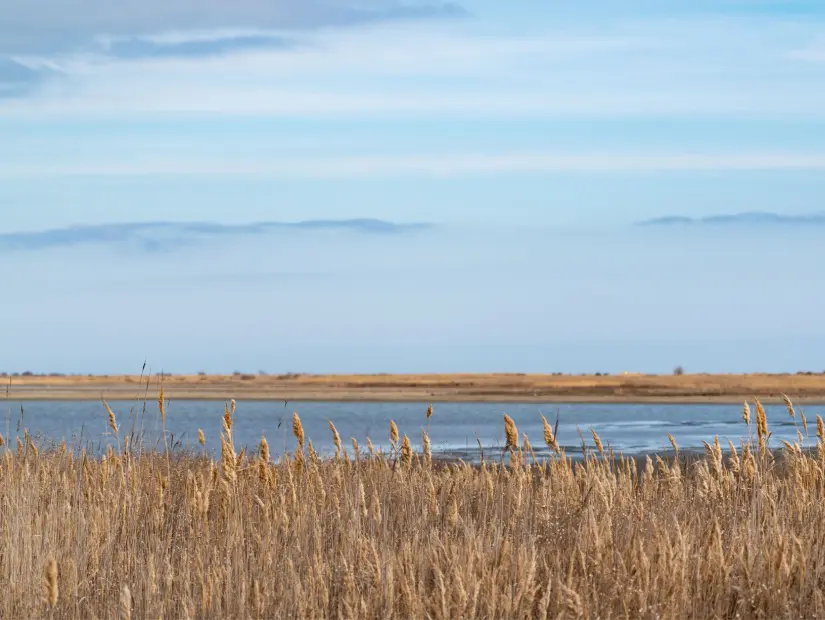
Absheron Peninsula
The Absheron Peninsula is located east of Baku and on the western coast of the Caspian Sea. The peninsula has a large area of approximately 2.110 square kilometers. It hosts important cities such as Baku, Sumgayit and Khırdalan. The Absheron Peninsula stands out with its natural resources and history. It is famous for its oil and natural gas reserves. It is also an important region in terms of minerals, agricultural products and fishing. The peninsula has tremendous natural beauty. It offers a tourist destination with its historical and cultural riches. It attracts thousands of local and foreign tourists every year.
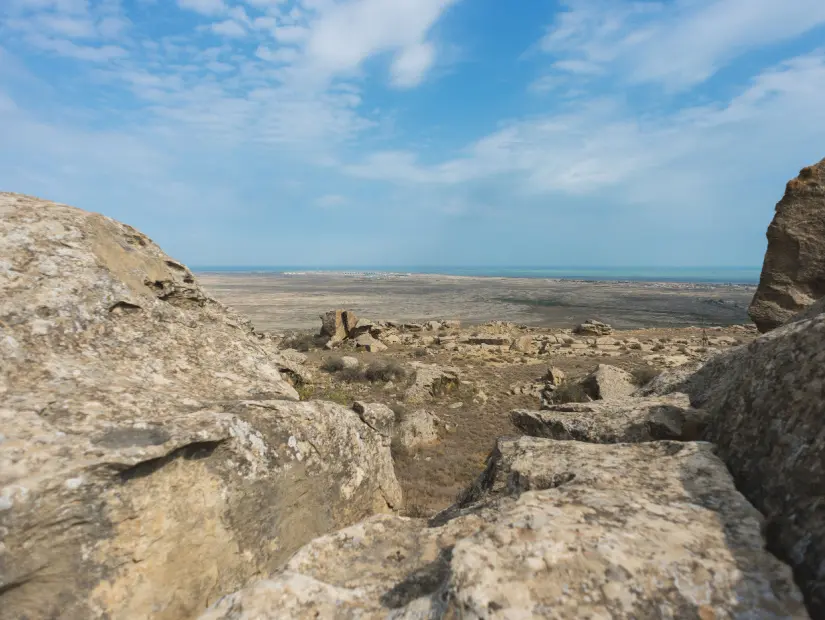
Baku Ataturk Park
Baku Ataturk Park, Mustafa Kemal AtatürkIt is a park dedicated to. It was opened in 2011, on the 130th anniversary of Ataturk's birth. The park is located in the Narimanov district of Baku, near the Ganjlik Shopping Center. It spreads over an area of approximately 5 hectares and is open to visitors. Its design emphasizes the historical and cultural heritage of Azerbaijan and Turkey. A 10-meter-high bronze statue of Ataturk stands in a thoughtful pose. A traditional Turkish house and items belonging to Turkish culture are exhibited in the park. The Turkish garden is decorated with Turkish plants and flowers. It also houses a Turkish coffee house. Baku Ataturk Park represents the friendship between Azerbaijan and Türkiye.
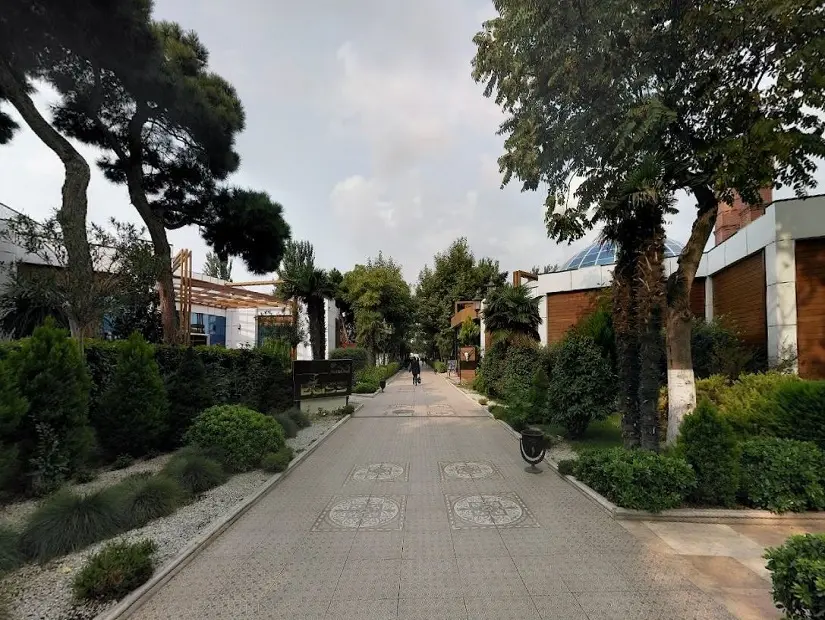
Baku Fountains Square
Baku Fountains Square is an important tourist attraction built in 1868. Formerly known as Parapet, the square is now called Baku Fountains Square. In the center of the square is a 1909-meter-high fountain built in 20. The fountain raises water from seven points and is surrounded by various statues. There are historical and cultural structures around the square. The Baku Opera and Ballet Theatre is located around the square. The Baku State Philharmonic Orchestra and the State Theatre are also nearby. There is a water show built in 2007 in the square. Every evening, a light and music show is performed. Baku Fountains Square offers a fascinating atmosphere during the day and at night.
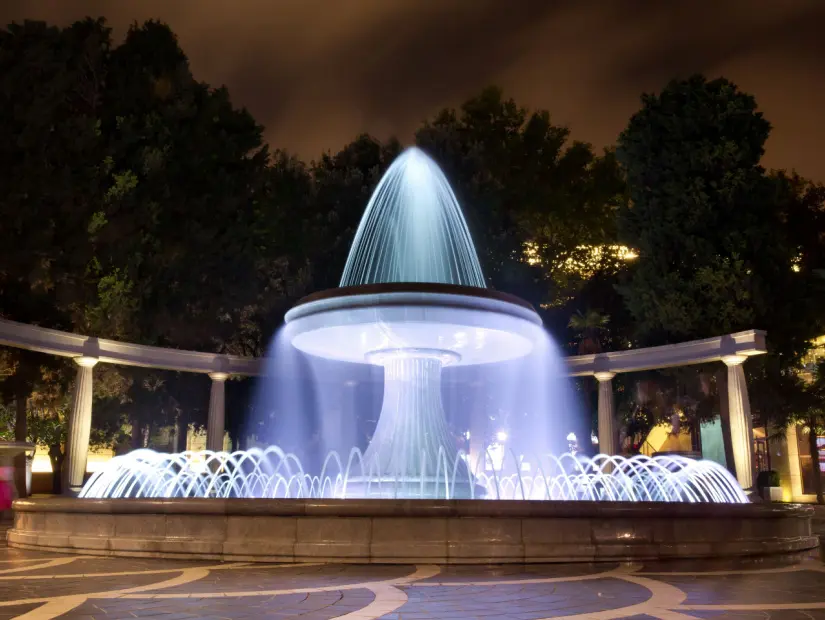
Baku Funicular
Baku Funicular is one of the city's prominent tourist attractions. It started operating in 1960. The 455-meter-high cable car offers magnificent views of Baku. The cable car starts from the "Behram Gur" station and ends at the "Martyrs' Lane" station. It has a capacity of 150 passengers at a time. You can observe the historical and modern textures of Baku, the Caspian Sea and mountain views. The funicular is visited with great interest by both locals and tourists. This cable car ride allows you to explore the beauties of Baku panoramically.
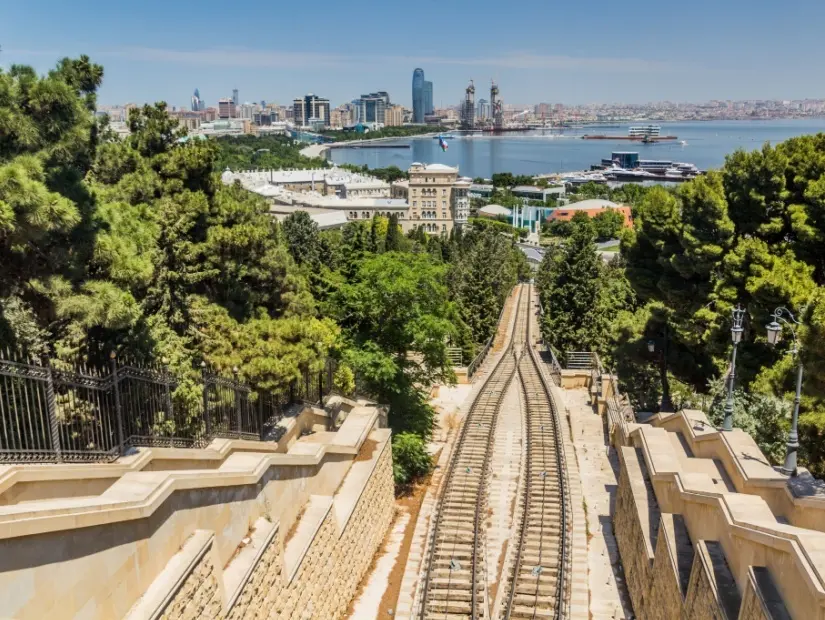
Baku Zoo
Baku Zoo is one of the leading tourist attractions in Azerbaijan. It was established in 1928 and covers an area of 28 hectares. The garden is home to about 1200 species of animals from all over the world. It houses animals such as lions, tigers, elephants, giraffes, gorillas, pandas and penguins. The rich collection of animals attracts both locals and foreign visitors. Thousands of visitors visit the garden every year to explore the natural world. Baku Zoo is an important destination for those who want to observe the natural life.
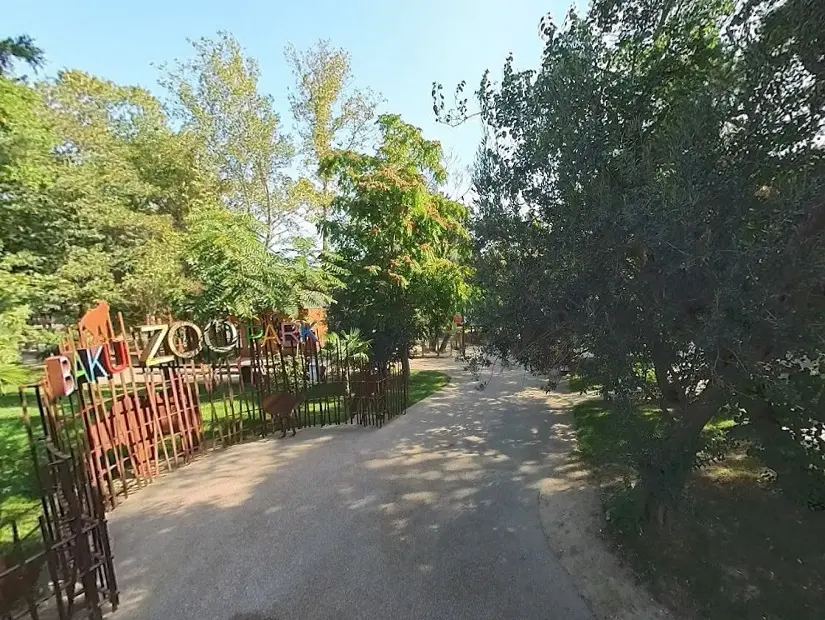
Baku Mini Venice
Baku Mini Venice is a popular tourist destination in the capital of Azerbaijan. It was built in 1960 and is located on the shores of the Caspian Sea. Venice It attracts attention with its architecture in the style and offers a unique experience. There are two large islands and several small islands, and you can visit the canals. Gondola trips reflect the atmosphere of Venice. Mini Venice is an ideal alternative for those who cannot visit Venice. The streets, bridges and canals of Venice have been recreated here. Visitors pass over the bridges and feel the atmosphere of Venice by traveling on the canals with gondolas. Mini Venice attracts great attention and is visited intensively in the summer months. It is a special place to see for those exploring Baku.
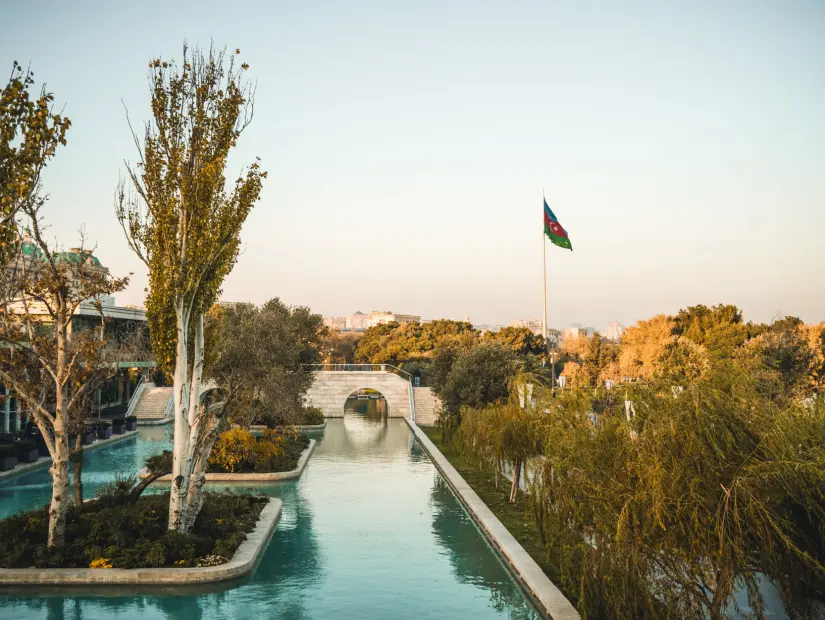
Lake Boyukshor
Lake Boyukshor is 20 km south of Baku and is the largest lake on the Absheron Peninsula. The lake is 16,2 km² wide and has an oval shape. It is 10 km long from northwest to southeast. Its maximum width varies between 1,5-2,0 km. The water level may vary depending on the season. In summer, the water temperature can be between 25-30 °C. Various fish species live in the lake, enriching its biodiversity. Lake Boyukshor is a popular destination for local and foreign tourists. It is ideal for nature walks, picnics, fishing and bird watching. The lake offers a peaceful escape and impressive views.
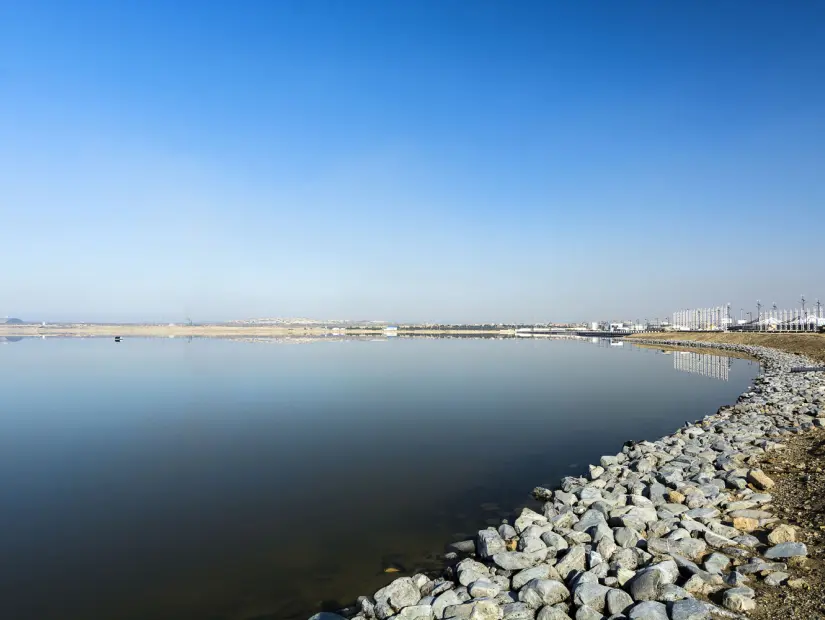
Mud Volcanoes
Mud volcanoes are formed when mud, gas and water from underground rise to the surface under pressure. Azerbaijan is home to more than 2000 mud volcanoes worldwide. 344 of these volcanoes are located in Azerbaijan, most of them on the Absheron Peninsula. Mud volcanoes are usually small in size and can reach heights of up to 10 meters. However, some can reach heights of up to 50 meters. These volcanoes can be of different shapes and sizes. Some are constantly active, while others remain inactive for long periods. The mud volcanoes of Azerbaijan reflect historical geological structures. These volcanoes are a center of attraction for tourists and attract great attention. Thousands of tourists come to Azerbaijan every year to see these natural formations.
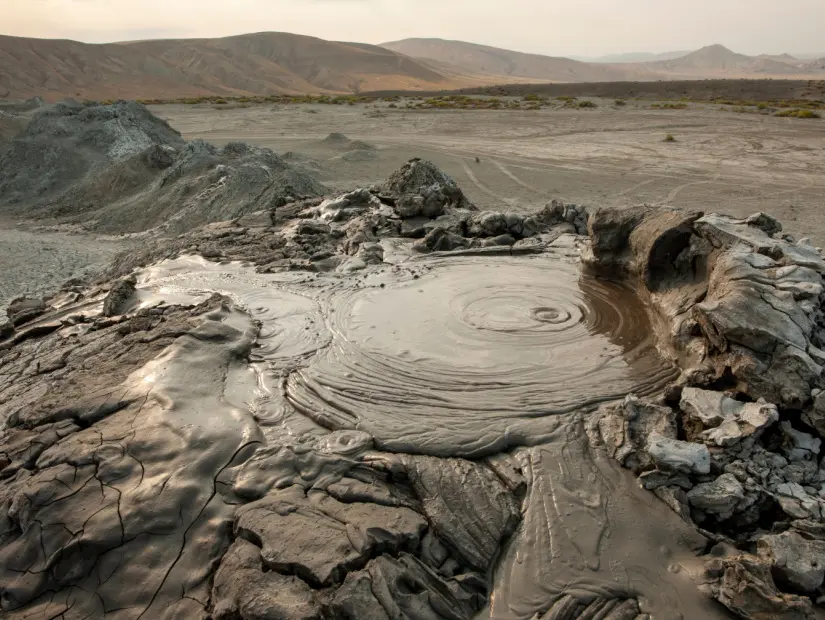
Upland Park
Upland Park is a park located in the center of Baku and offers magnificent views. The park was built in memory of those who lost their lives in Azerbaijan's struggle for independence. For this reason, it is popularly known as the Martyrs' Alley. It also houses the tomb of General Azi Aslanov. Located at the highest point of Baku, the park offers panoramic views. The Flame Towers, Baku Bay and the Old City can be seen from the park. The lighting in the evenings creates a magical atmosphere. The park is a perfect place for taking photos and videos. Upland Park offers walking trails, bike paths and children's playgrounds. Picnic areas, cafes and cultural events are also available. It hosts events such as concerts, exhibitions and festivals. Upland Park is one of the popular destinations in Baku. It offers a unique experience between both nature and history.
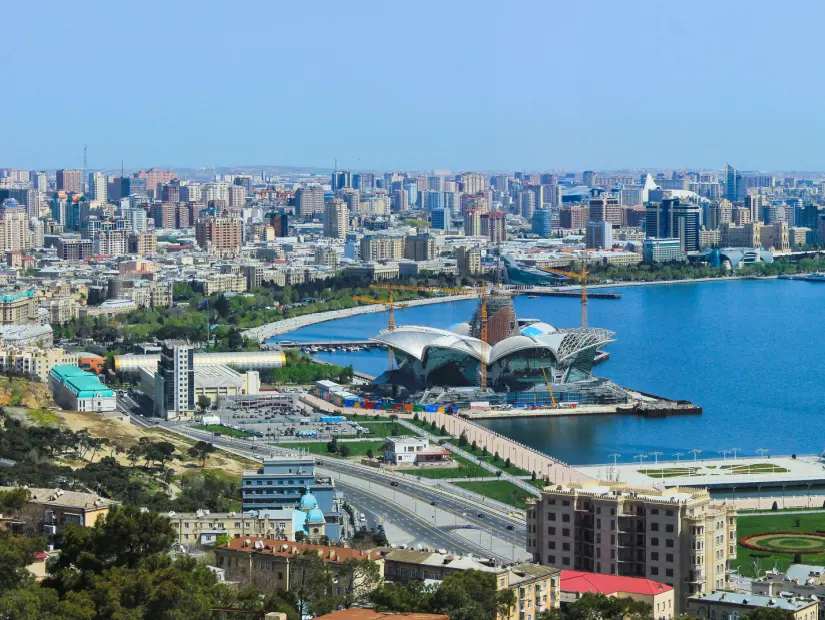
Fuzuli Park (Winter Park)
Fuzuli Park is one of the charming parks in Baku, also known as Qış Park. It is an ideal escape for nature lovers, a place where you can get away from the noise of the city. The park is full of various species of plants and trees, adding liveliness and color. It offers walking paths, seating areas and children's playgrounds. There is a statue dedicated to the Azerbaijani poet Fuzuli in the park. The statue is placed in the center of the park and attracts attention. Visitors have the opportunity to remember Fuzuli's works and thoughts. Fuzuli Park hosts concerts, festivals and cultural events. Visitors experience fun and unforgettable memories.
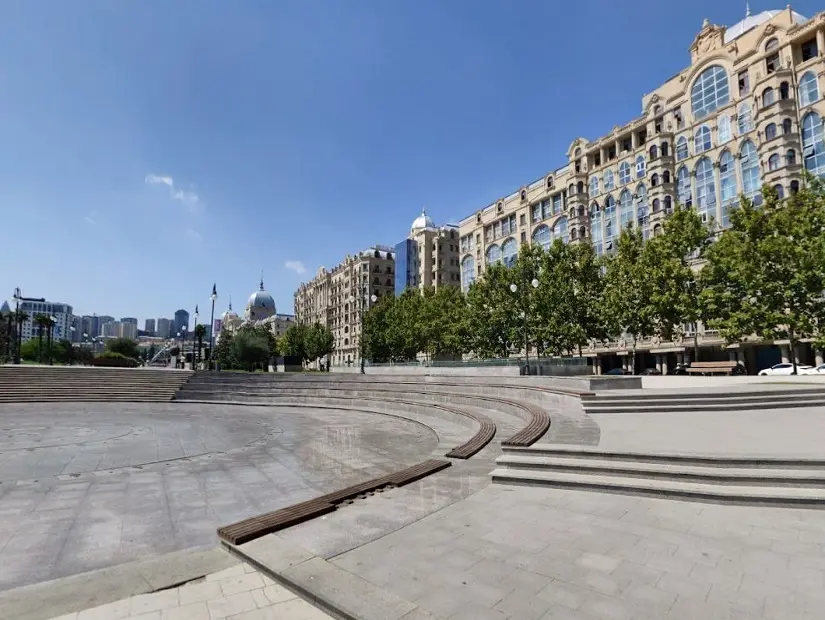
Lake Goygol
Lake Goygol is one of the unique natural wonders of Azerbaijan and means “Blue Lake”. The clear blue of the lake combines with the green forests around it and creates a stunning view. Located close to the city of Ganja, the lake is surrounded by the Goygol National Park. The national park is home to a variety of plant and animal species. Lake Goygol was formed as a result of an earthquake in 1139. During the earthquake, Mount Kepəz collapsed and blocked the Agsu River. This natural beauty attracts local and foreign tourists. There are hiking trails, camping areas and accommodation opportunities around the lake. Lake Goygol is one of the most important tourist destinations in Azerbaijan.
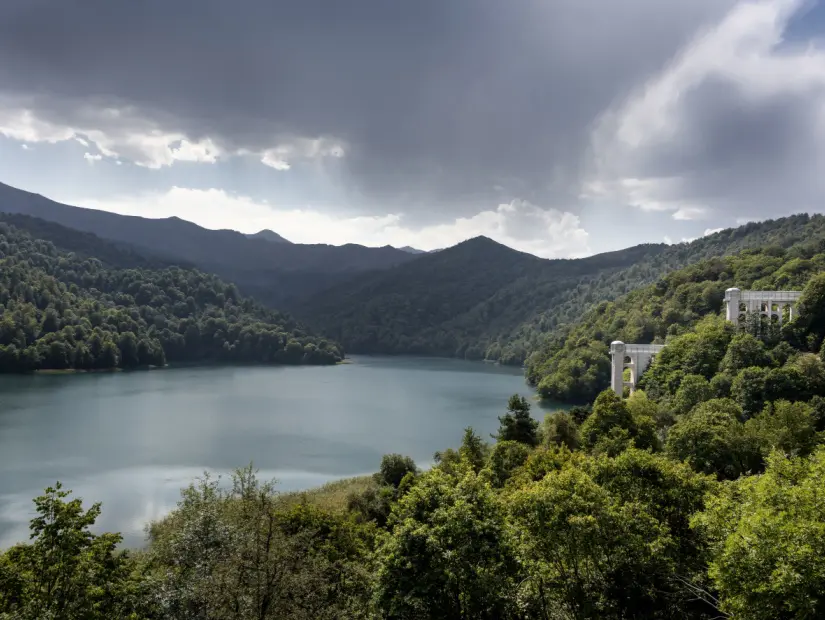
Khagani Garden (Molokan Garden)
Khagani Garden is one of the oldest and most serene parks in Baku. It is named after the medieval poet Khagani Shirvani. The park offers dense greenery and flowers on an area of 1 hectare. There is an impressive pond in the middle. The Three-Colored Fountain symbolizes the history of Baku. Red represents the Russian occupation; blue represents the period of independence; and green represents Islamic culture. The park was previously known as the Molokan Garden. The Molokans were a Christian sect that broke away from the Russian Orthodox Church. The Molokan Church reflects this cultural heritage. Khagani Garden is in the center of Baku and is easily accessible. You can take a stroll in the pond and watch the colorful water of the fountain. You can also try delicious food in the cafes in the park.
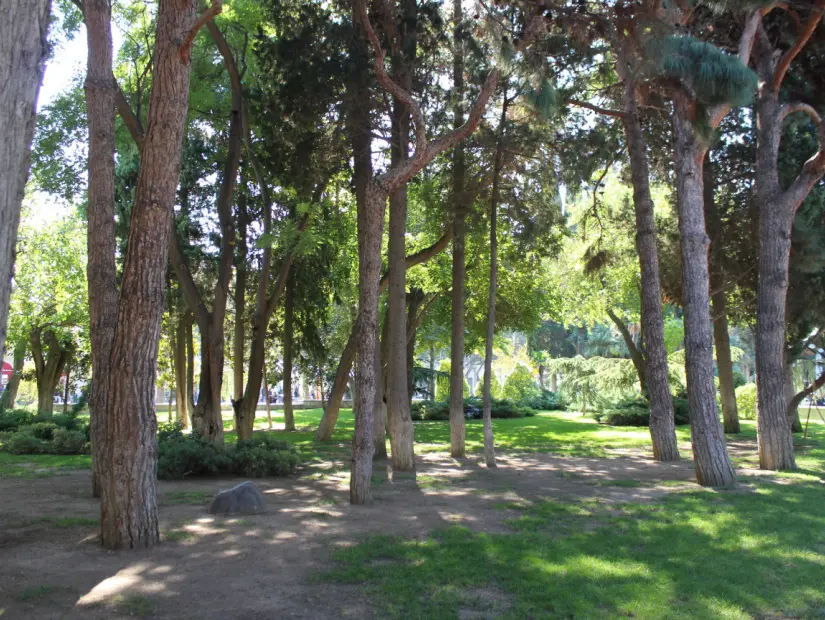
Lake Khojahasan
Khojahasan Lake is a natural area located 13 kilometers south of Baku. It is located on the banks of the Kura River at an altitude of 200 meters. The lake is 1.5 kilometers long and 0.5 kilometers wide. Its average depth is measured as 10 meters. It is a natural lake fed by the waters of the Kura River. Surrounded by green areas, it is one of the natural beauties of Baku. It is frequently visited by both locals and tourists. There are walking paths, observation terraces and children's parks in the surrounding area. Fishing and water sports can be done in the lake. Khojahasan Lake offers an ideal place for recreation. Visitors have the opportunity to spend time in touch with nature.
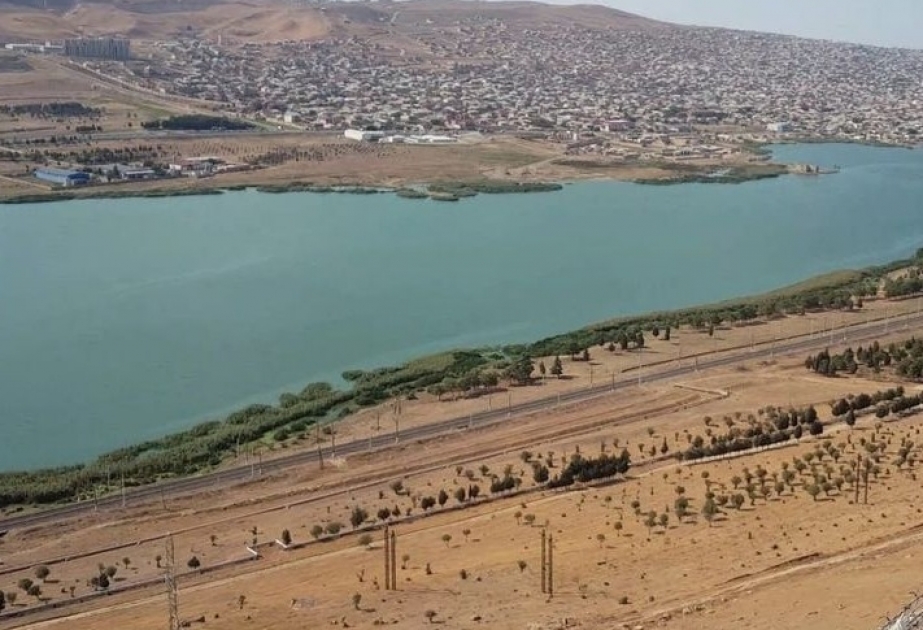
Qobustan National Park
Qobustan National Park is located 60 kilometers west of Baku and covers an area of 537 hectares. It is a UNESCO World Heritage Site and is famous for its historical rock carvings. The rock carvings date back between 5.000 and 20.000 years. The carvings depict human figures, animals, hunting scenes and religious rituals. The park is an important part of Azerbaijan’s cultural heritage and tells the history of the communities. It also contains geological features such as mud volcanoes, karst caves and rock formations. Qobustan National Park is a unique destination for both local and foreign tourists.
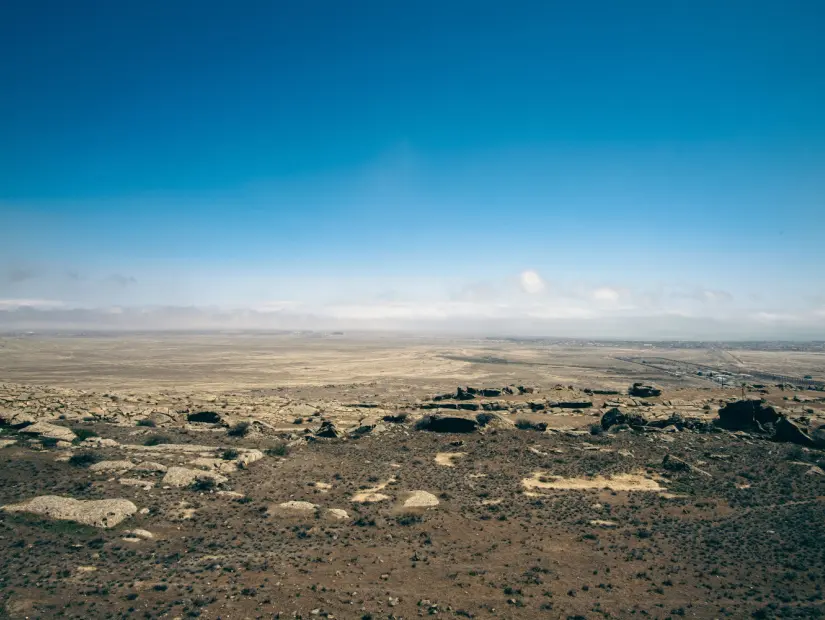
Masazir Lake
Lake Masazır is located 21 kilometers south of Baku. It attracts attention with its pink color. Its mineral richness makes the lake a healing source. The lake water is used in the treatment of skin diseases and respiratory problems. It is good for asthma, bronchitis, kidney and stomach diseases. Lake Masazır is an important bird paradise. It is home to birds such as pelicans, flamingos, ducks and cranes. It is visited by thousands of tourists every year. The lake represents the natural beauty and rich heritage of Azerbaijan. Lake Masazır is an attractive center of attraction for nature lovers.
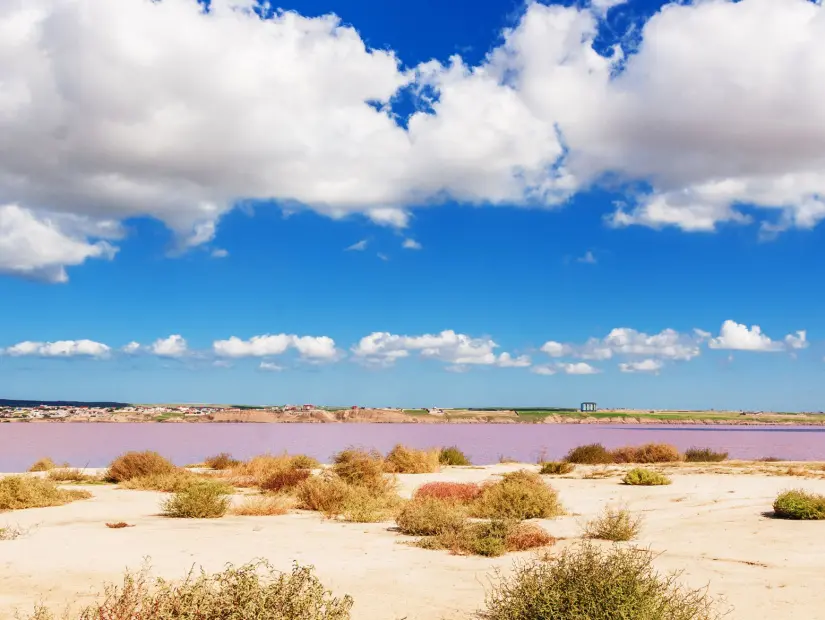
Yanar Mountain
Yanar Dag is located 20 kilometers north of Baku and is constantly burning. The flames from this natural gas source continue to burn 24 hours a day. The flames can reach up to 3 meters high. The fire is formed when the gas source under the hill rises to the surface. It is known as one of the ancient religious sites of Zoroastrians. It is claimed that it was accidentally lit by a shepherd in the 1950s. The fire has never gone out since. In 2007, the Presidency of Azerbaijan took Yanar Dag under protection. Yanar Dag stands out among the natural beauties of Azerbaijan. The flames become more impressive at night. For this reason, it attracts more visitors at night.
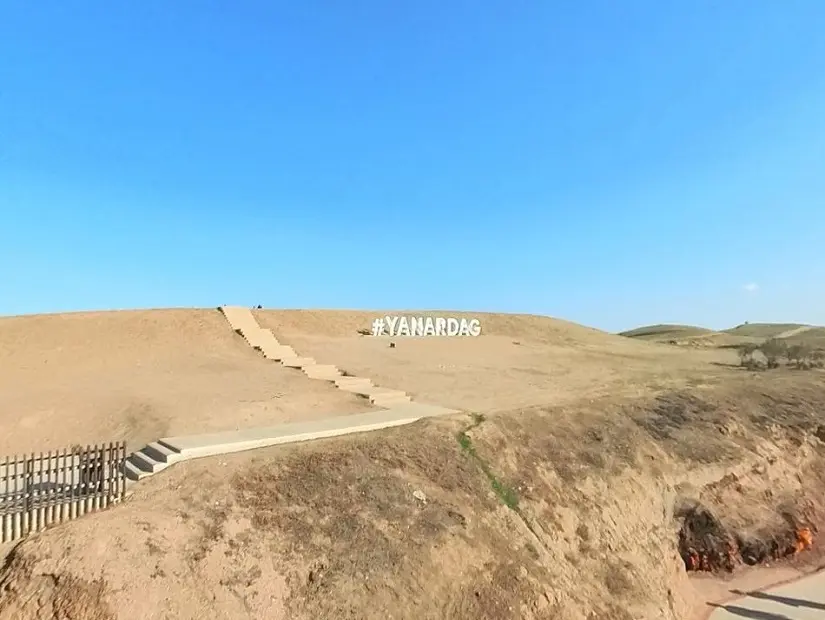
The parks and natural wonders of Azerbaijan offer unique destinations for nature lovers and those looking for a peaceful escape. From the preserved ecosystem of Absheron National Park to the unique natural fire of Yanar Dag, each region offers its own unique beauty and opportunity for discovery. The historical atmosphere of the Upland Park and the healing waters of Lake Masazır provide visitors with unforgettable experiences. These natural wonders in Azerbaijan reflect the lifestyle of the local people and offer visitors the opportunity to discover the country’s natural diversity. These parks and natural wonders are essential stops on a trip to Azerbaijan.
Boulevards and Squares to Visit in Azerbaijan
Azerbaijan stands out not only for its historical richness but also for its impressive boulevards and squares. These boulevards and squares are important areas that combine both the historical and modern aspects of the city, offering visitors a cultural journey. The huge squares and carefully designed boulevards located in the heart of Baku offer great opportunities to explore the socio-cultural fabric of Azerbaijan. Each of them is a special place that showcases the energy of the city, its artistic values and the historical heritage of its people. Extending from Freedom Square to Nizami Street, these boulevards create dynamic living spaces where tourists and locals alike enjoy spending time.
Military Victory Park
Military Glory Park is a public military museum located on Baku Boulevard. It symbolizes the victory in the 2020 Nagorno-Karabakh War. The park features models of defense systems and more than 300 exhibits. The exhibits include tanks, combat vehicles, artillery installations, anti-aircraft missile systems. Small arms and various vehicles are also exhibited. The park displays photographs of martyrs and veterans, the heroes of the victory. Military Glory Park reflects Azerbaijan's love for the homeland and self-sacrifice. Visitors discover the heroic history of the Azerbaijani people here.
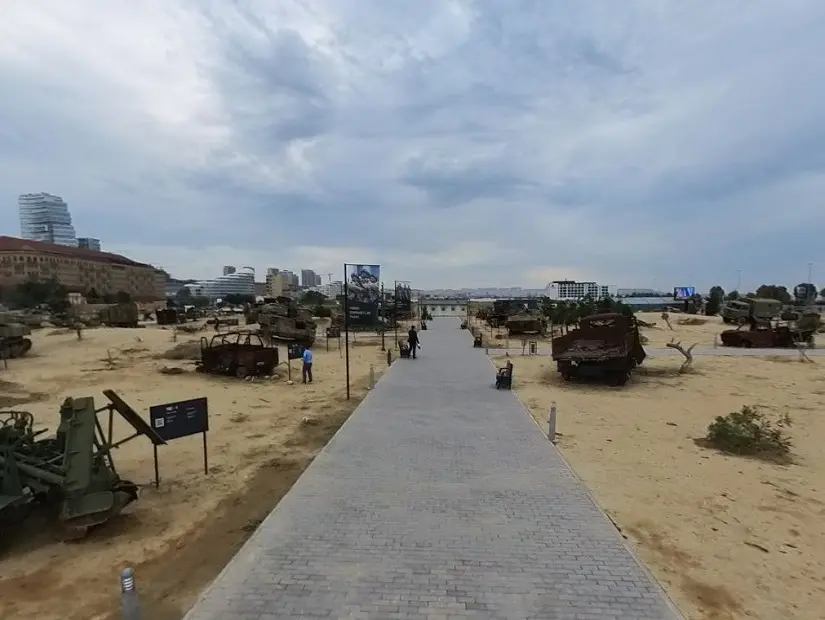
Baku Boulevard
Baku Boulevard is located on the shores of the Caspian Sea and is 10 kilometers long. It was built in 1909 and offers a wealth of history. Visited by thousands of tourists, the boulevard offers a pleasant atmosphere day and night. The most striking feature of the boulevard is the walking path along the Caspian Sea. This path offers visitors a peaceful sea view. There are various statues and monuments along the boulevard. These statues reflect the history and culture of Azerbaijan. Restaurants, cafes and shops are ideal for exploring social life. Baku Boulevard symbolizes the city's modernization process and cosmopolitan identity. It hosts many events every year and offers a dynamic venue. Concerts, festivals and fairs keep the boulevard lively. It also has features such as children's playgrounds, sports facilities and an amusement park. The boulevard offers a unique atmosphere to the city and provides a pleasant time.
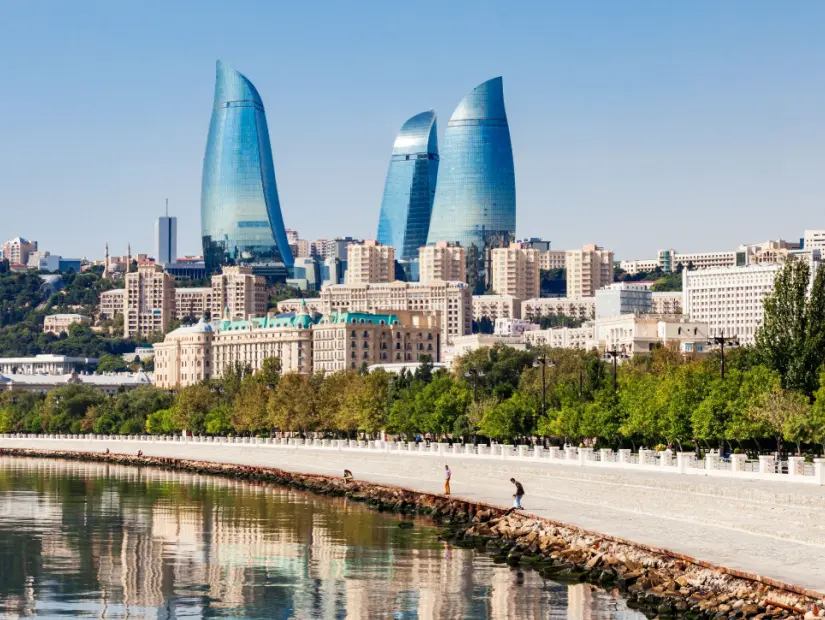
White City Boulevard
White City Boulevard is an important area reflecting Baku's contemporary architecture and culture. It is located on the shores of the Caspian Sea, 2,5 kilometers long. The construction process began in 2010 and was completed in 2015. Its design inspired by traditional Azerbaijani architecture draws attention. At night, lighting details create an impressive atmosphere. The cultural centers, art galleries and restaurants around the boulevard are quite popular. The walking path offers a pleasant experience with sea views. Statues and monuments display the rich history and culture of Azerbaijan. White City Boulevard symbolizes Baku's modern identity. It is visited by thousands of tourists every year. It stands out as a place that revitalizes the city with social events and festivals.
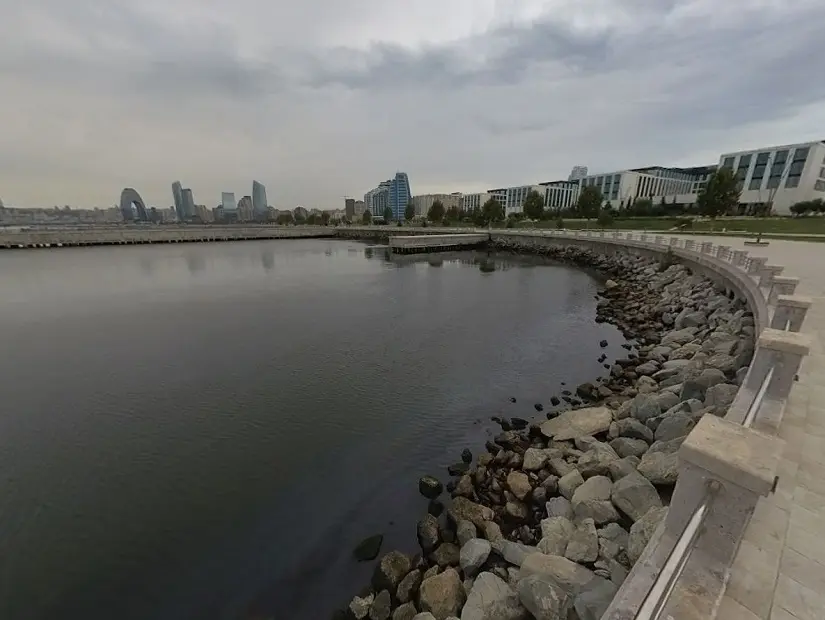
National Flag Square
The National Flag Square is located in Baku and is one of the important symbols of Azerbaijan. It was opened in 2010 and has a large area of 60 hectares. The most striking feature of the square is its giant flag; it is 162 meters long. This flag is the symbol of independence and power of Azerbaijan. The architecture of the square reflects the traditional architecture of Azerbaijan. There are statues and fountains around it, offering a visual feast. It is highly popular with local and foreign tourists. There are restaurants, cafes and souvenir shops around the square. The National Flag Square is a perfect place to explore the history and culture of Azerbaijan.
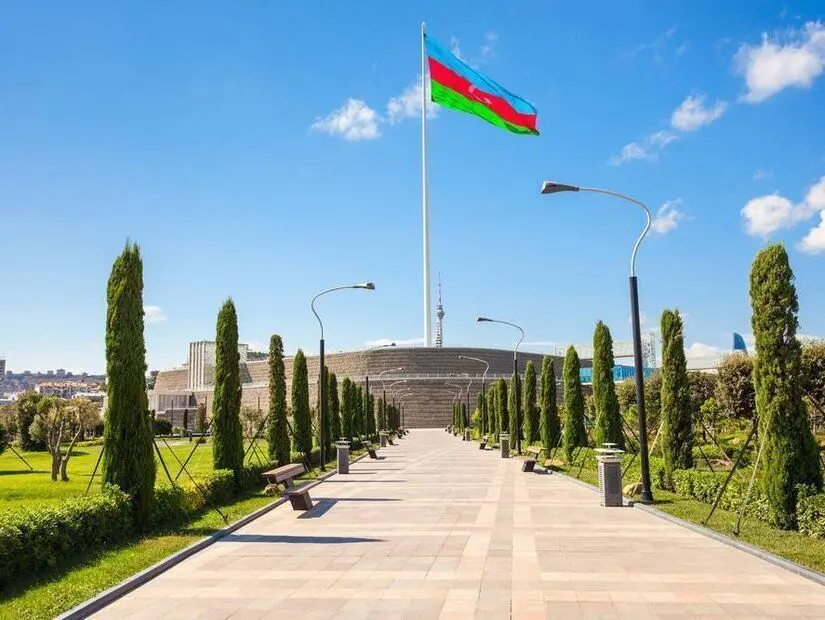
Nizami Street
Nizami Street is a famous shopping and entertainment street located in the heart of Baku. The street is named after the famous poet Nizami Ganjavi. The street is approximately 3,5 km long and is surrounded by luxury stores. Thousands of tourists visit Nizami Street every day. It offers a wide range of stores for shopaholics. It ranges from world brands to local designs. There are also many options for those looking for souvenirs. The street has restaurants from Azerbaijani to international cuisine. There are also nightclubs with live music and dance performances. Nizami Street is a great place for shopping, dining and entertainment. It is one of the most popular tourist destinations in Baku.
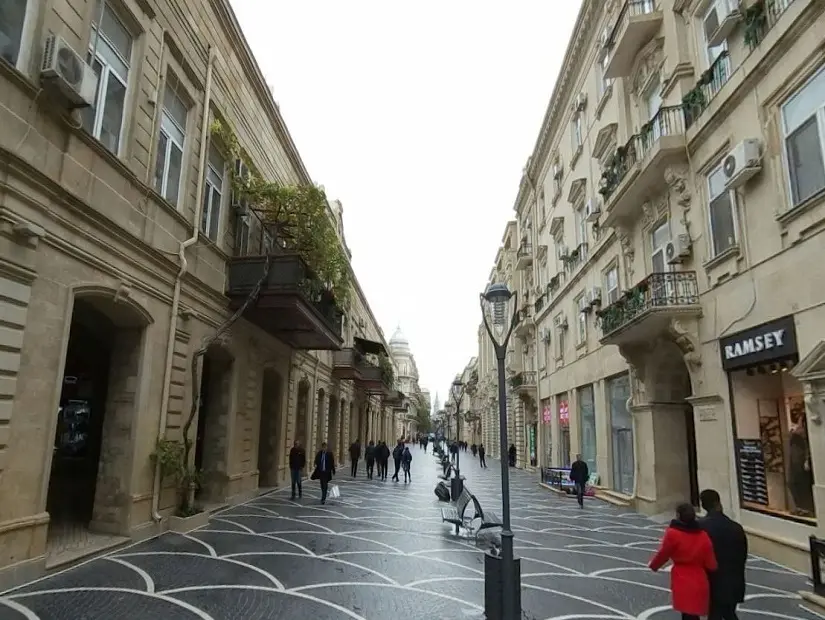
Freedom Square (Azadlik Square)
Freedom Square is a symbolic area located in the center of Baku. It was previously known as “Lenin Square”. It played an important role during the independence struggle of the 1990s. Its name was changed after Azerbaijan declared independence in 1991. The square became a symbol of independence and freedom struggle. The square, which covers an area of approximately 200 thousand square meters, is a recognizable symbol. There are statues and monuments reflecting the history of independence in the square. It hosts events, concerts and festivals every year. The events celebrate the spirit of independence and culture of Azerbaijan. Freedom Square symbolizes the history and culture of Azerbaijan. It keeps the memory of the independence struggle and its martyrs alive.
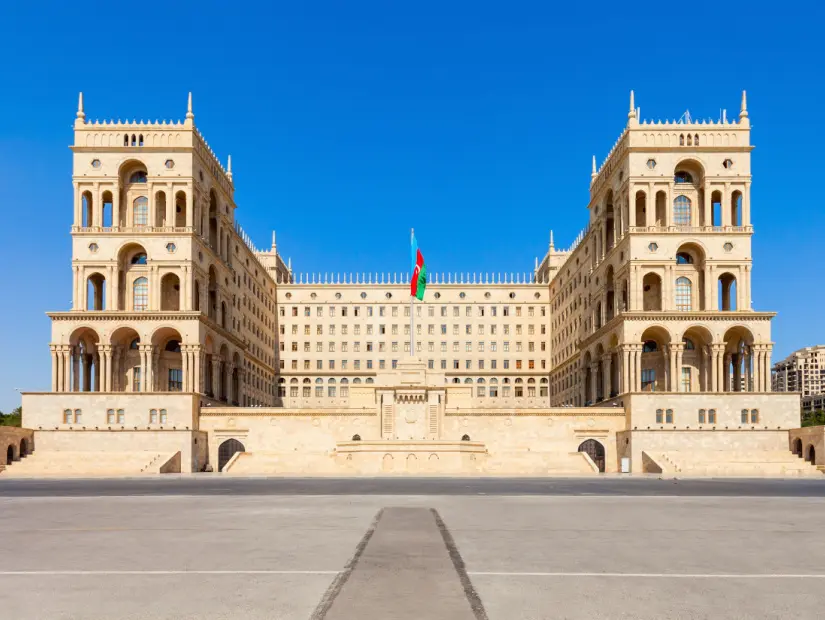
The boulevards and squares in Azerbaijan offer visitors a fascinating atmosphere while exploring the city. Each one symbolizes different historical events and cultural riches, while also revealing the modern face of the city. From the sea view of Baku Boulevard to the contemporary architecture of White City Boulevard, every corner offers a story waiting to be discovered. The National Flag Square and Freedom Square bear the symbols of Azerbaijan's struggle for independence. These squares are places that offer both locals and tourists alike places to relax and gain cultural experience, as well as places that bring Azerbaijan's rich history to life and promise unforgettable experiences.
Theatre and Art Centers to Visit in Azerbaijan
Azerbaijan is a country that stands out with its cultural heritage and artistic richness. Theatres and art centres reflect the historical and cultural values of Azerbaijan and offer a unique experience for art lovers. Important theatre halls and art centres in Baku host not only local artists but also world-renowned artists. These centres offer a variety of events for visitors of all ages, enriched by performances that combine traditional and modern art. These art venues, ranging from the Azerbaijan State Puppet Theatre to the Baku Crystal Hall, offer unique opportunities for those who want to discover the artistic heritage of Azerbaijan and embark on a cultural journey.
Azerbaijan State Puppet Theatre
The Azerbaijan State Puppet Theatre is located near the Icherishehir district of Baku. It was founded in 1931 under the name of Abdulla Shaik. The building was built in 1910 and was Baku’s first cinema center. Its architecture is striking in the elegant French Renaissance style. The theatre presents puppet shows for children and adults. Its repertoire includes everything from Azerbaijani classics to Russian and foreign literary works. The puppets provide an entertaining experience by reflecting the culture, history and art of Azerbaijan. The theatre is one of the oldest and most respected theatres in Azerbaijan. It is a must-see for those who want to explore the history and culture of Baku. Here you can discover the beauty and deep meaning of traditional puppetry.
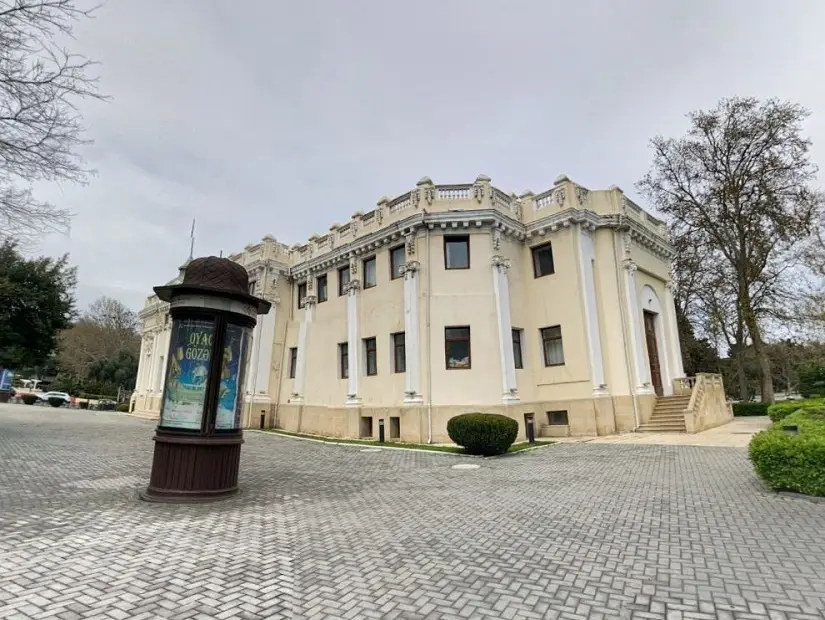
Azerbaijan State Song Theatre
The Azerbaijan State Song Theatre is an important cultural centre in Baku. It was founded in 1968 by the famous Azerbaijani singer Rashid Behbudov. The building reflects ancient architecture with its columned structure. The interior architecture bears influences from modern European theatre halls. The theatre performs opera, operetta, ballet, musical and dance. It hosts Azerbaijani and international artists. It appeals to different audiences with its wide repertoire. It promotes and develops the musical and dance traditions of Azerbaijan. This theatre is an important platform that highlights the artistic richness of the country.
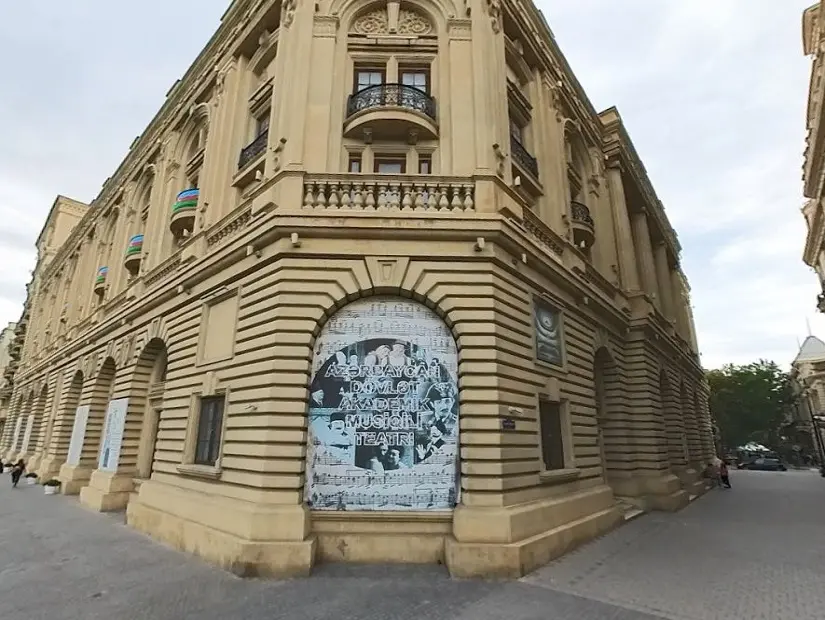
Baku Crystal Hall
Baku Crystal Hall is a multi-purpose venue located in the capital of Azerbaijan. It was built specifically for the 2012 Eurovision Song Contest. With a capacity of 23.000 people, it hosts concerts, sports competitions and theatrical performances. It stands out with its modern architecture, and its exterior is made of crystal glass. This feature makes the hall impressive at all hours. The interior design is modern and stylish, with wooden floors. The ceiling is highlighted by an illuminated dome. Baku Crystal Hall is one of the city's major tourist attractions. It hosts Azerbaijanis and international visitors. It makes a significant contribution to the cultural and social life of Baku.
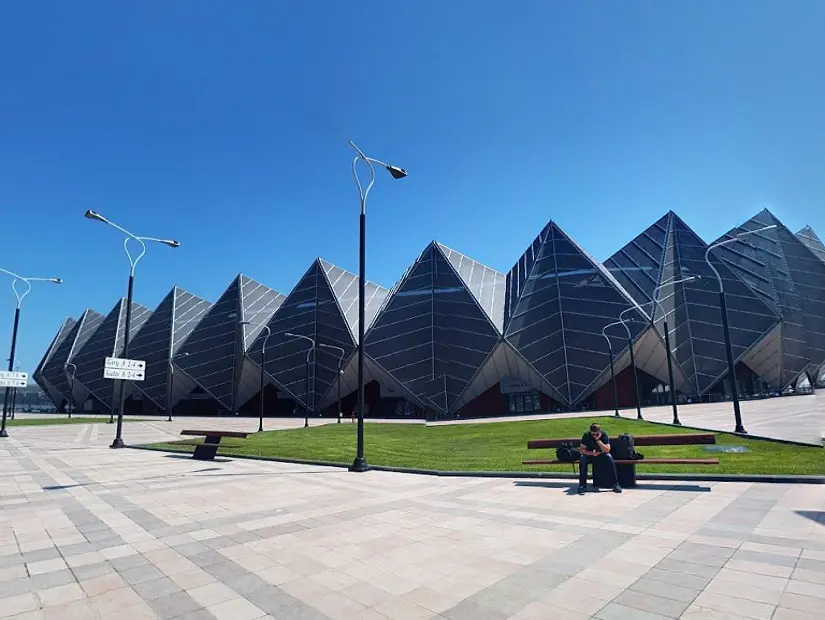
Baku Crystal Hall
Baku Crystal Hall is a multi-purpose venue located in the capital of Azerbaijan. It was built specifically for the 2012 Eurovision Song Contest. With a capacity of 23.000 people, it hosts concerts, sports competitions and theatrical performances. It stands out with its modern architecture, and its exterior is made of crystal glass. This feature makes the hall impressive at all hours. The interior design is modern and stylish, with wooden floors. The ceiling is highlighted by an illuminated dome. Baku Crystal Hall is one of the city's major tourist attractions. It hosts Azerbaijanis and international visitors. It makes a significant contribution to the cultural and social life of Baku.

Theatre and art centres in Azerbaijan are indispensable places for those who want to get to know the artistic heritage of the country. These venues not only offer visual and auditory feasts, but also create wonderful opportunities to deeply explore the history and culture of Azerbaijan. From opera and ballet performances at the Azerbaijan State Song Theatre to international events at the Baku Crystal Hall, these centres contribute to the cultural life of Azerbaijan and attract thousands of local and foreign tourists every year. For art lovers, Azerbaijan invites you to an inspiring journey of experience and discovery.
Places to visit in Azerbaijan create a rich exploration route, both historically and naturally. From the country's historical sites to its magnificent squares, from art centers to unique natural beauties, a different story is presented at every step. These places create excellent opportunities to both follow the traces of the past and to get to know Azerbaijan's cultural heritage more closely. Azerbaijan offers its visitors not only beautiful landscapes and historical buildings, but also promises a deep cultural journey. Exploring this country is a unique opportunity for anyone who wants to experience both history and nature.








